These two men, Guilhem and Lilian crossed The Atlantic in this tiny boat a little bit closer to the water then we did. On the 7th of January we met them when they arrived to Le Marin in Martinique from the Canaries. They had been rowing two hours, then sleeping for two hours in the tiny, tiny cabin for 49 days!! They had small handheld water makers, but they broke some days before the arrival. Amazing that they made it and looked quite healthy.
The traditional way of sailing in Martinique aquires more teamwork. The Yole was originally a fishing craft which is characterised by its long canoe-like hull, tapered shape and square sail. These boats are not easy to sail. They quickly hit speeds well above ten knots and in a sea are not easy to handle. No keel and no rudder, just a long skeg and deep bow. Crew members must perch off the hull on long movable oars and hereby change the balance.
We continued and sailed west, around the south coast of Martinique. We passed the small truncated cone of an islet called Diamond Rock. It is famous for its role in the Anglo-French wars at the beginning of the 19th century. In 1804 the English installed 20 sailors and 4 cannons on the steep cliffs, transforming it to an impressive fortress. They stayed battering at French leisure ships for seventeen months. According to the legend, the French caused several ships filled with casks of rum to be wrecked on the island and as the English were dead drunk, they gave up without a fight. Sometimes history is very difficult to imagine.
We arrived to Grand Anse de Arlet, a pretty little bay on the southwestern coast, and grabbed a mooring ball close to the dinghy dock. Suddenly, a professional diving boat came close, so unfortunately we had to move to the left side on the bay. In the end, we were lucky, then the next morning we spotted a turtle coming to the surface to snap some air. Nilla jumped into the water with goggles and camera, found the turtle grazing on the bottom and made this movie.
The turtles are amazingly beautiful and they float and swim so calmly in the water. When we arrived to the bay, Nilla asked the harbour master where the turtles were and his answer was: “If you don’t see one, you are unlucky.” We met them several times while we swam from the boat to the reef closer to the shore. One Sunday morning one was diving down and when it came to the bottom , it shortly greeted two other turtles and then all three swam away in different directions. The coral reef in the bay was full of beautiful and colourful fishes and different kind of corals, e.g. smooth brain coral, ribbon coral and ivory tree coral. Lots of barrel sponge, yellow tube sponge, sea rod, common sea fan and venus sea fan. It was like visiting another universe just by looking under the surface.
Martinique has such a beautiful landscape both on land and in the water. One day we drove through lush green rainforest northwest of the capital, Fort-de-France to the botanical garden, called Jardin du Balata. Hundreds of different exotic plants on a hill in the most beautiful garden we have ever seen. It was pouring cats and dogs, but it was the closest you will get to step into the world of Alice in Wonderland. The Kolibris had found their paradise and were flying around. On the slippery road back we found a beautiful rainfall in the green forest. Its balsam for the soul to sea all the lush green and breath the fresh moist air.
After a week with quite rough wind but nice snorkelling and relaxing in Grand Anse de Arlet, we continued to St. Pierre on the northwestern coast of Martinique. St Pierre is the former Capital, but in 1902 it was covered in ashes as the close volcano, Mont Pelée had an eruption. 30 000 people died, only one prisoner survived behind the solid walls of the prison. The sand is black at the beach and the town still gives a spooky ghost feeling in the evening.
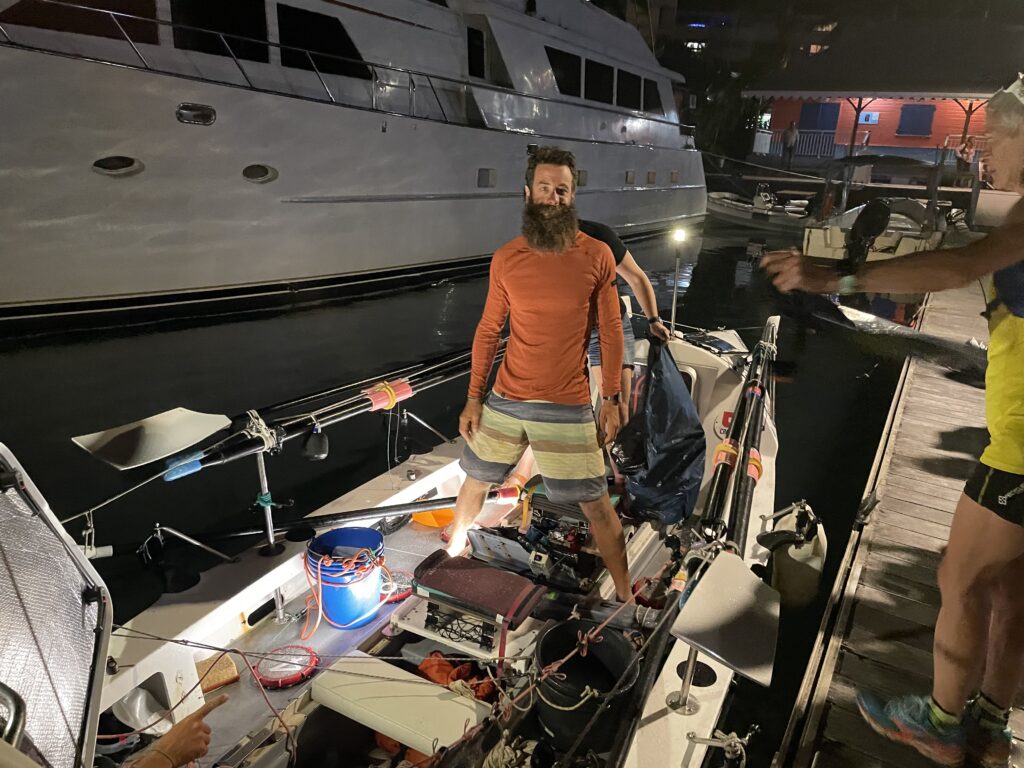
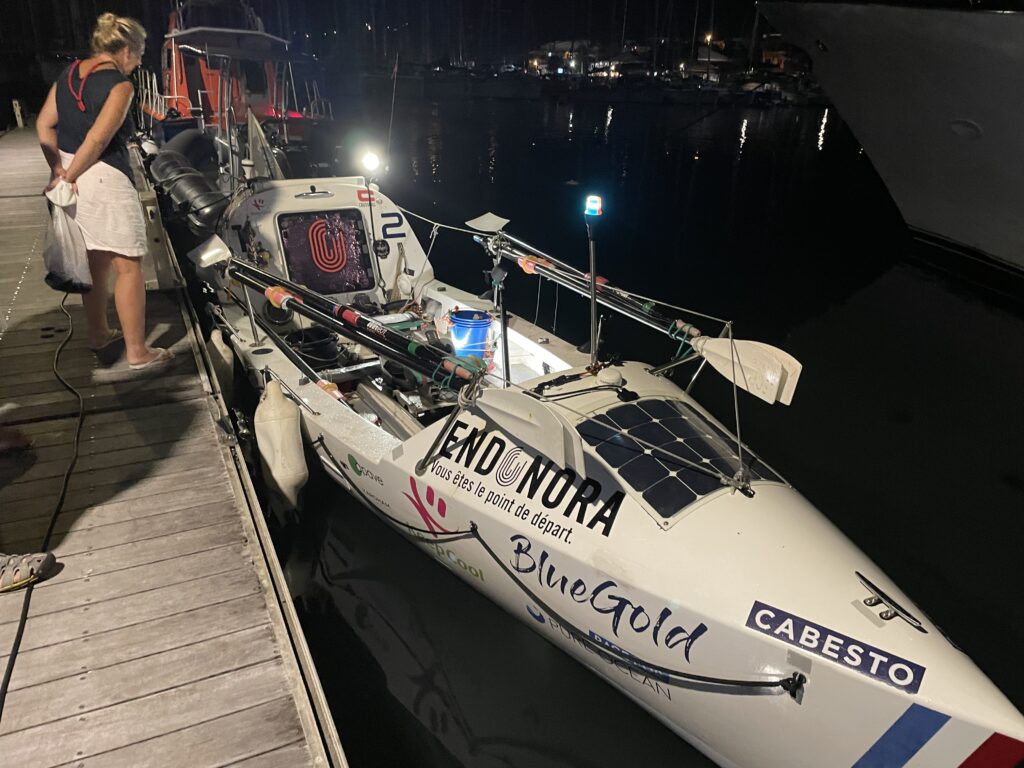
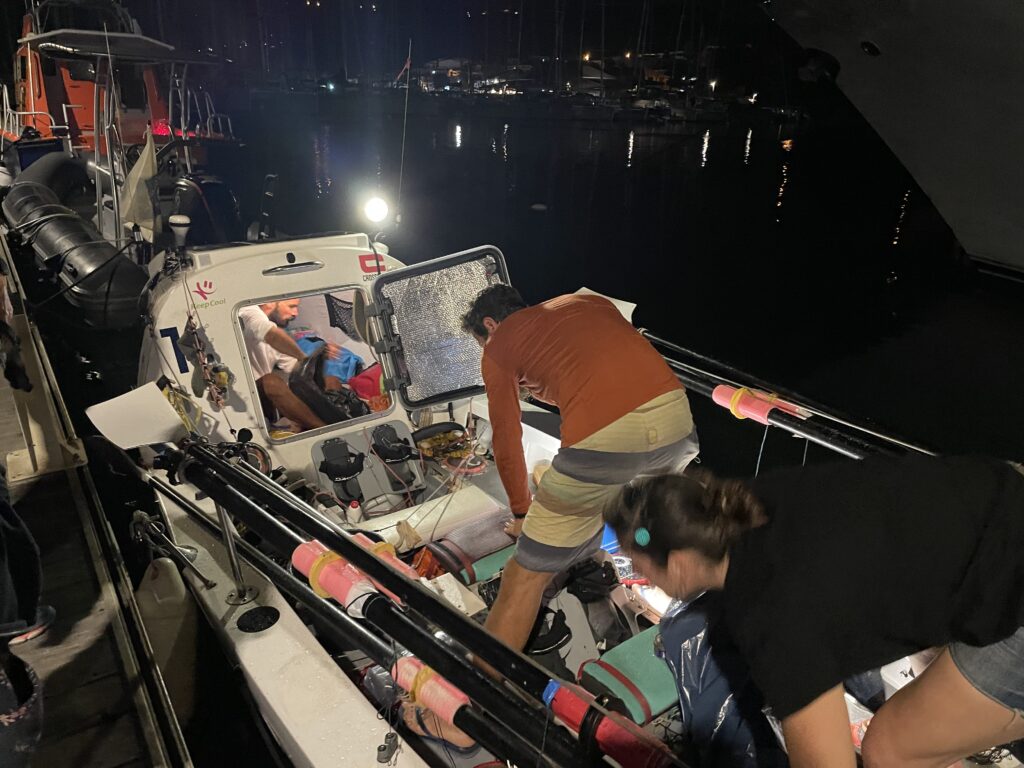
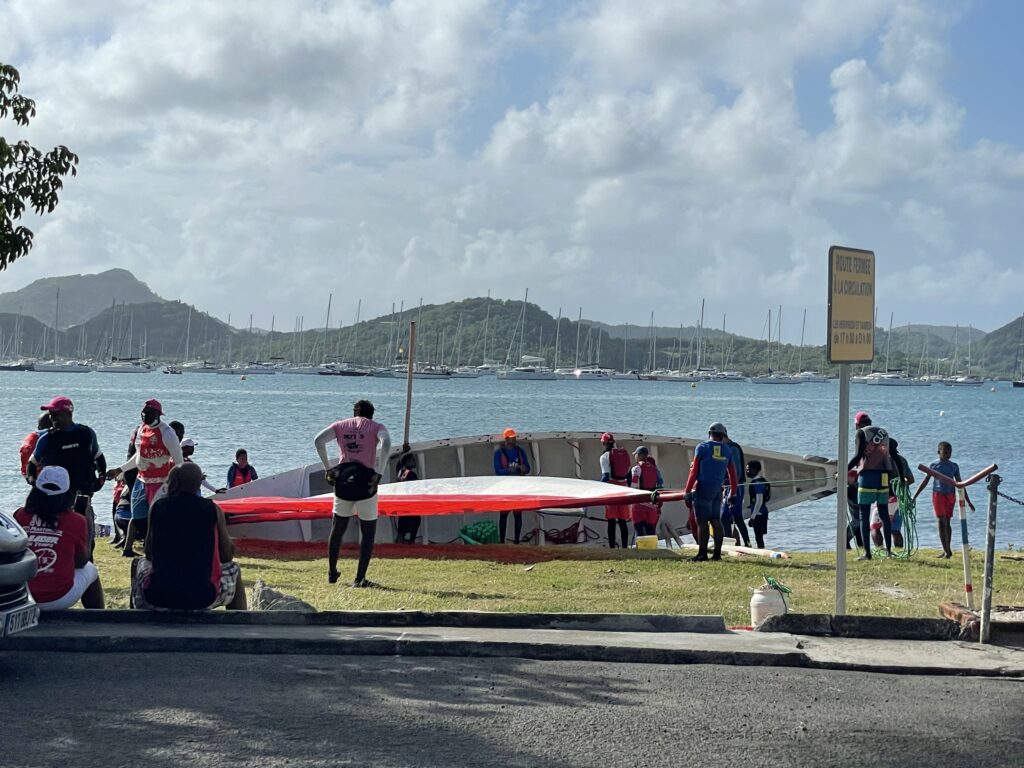
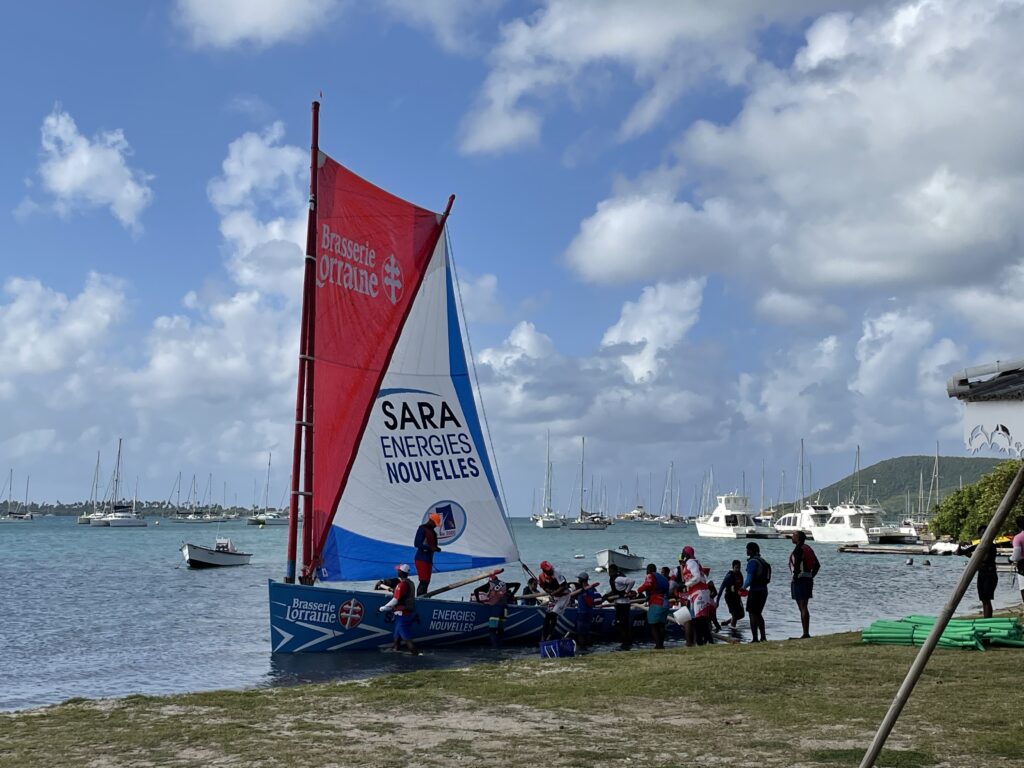
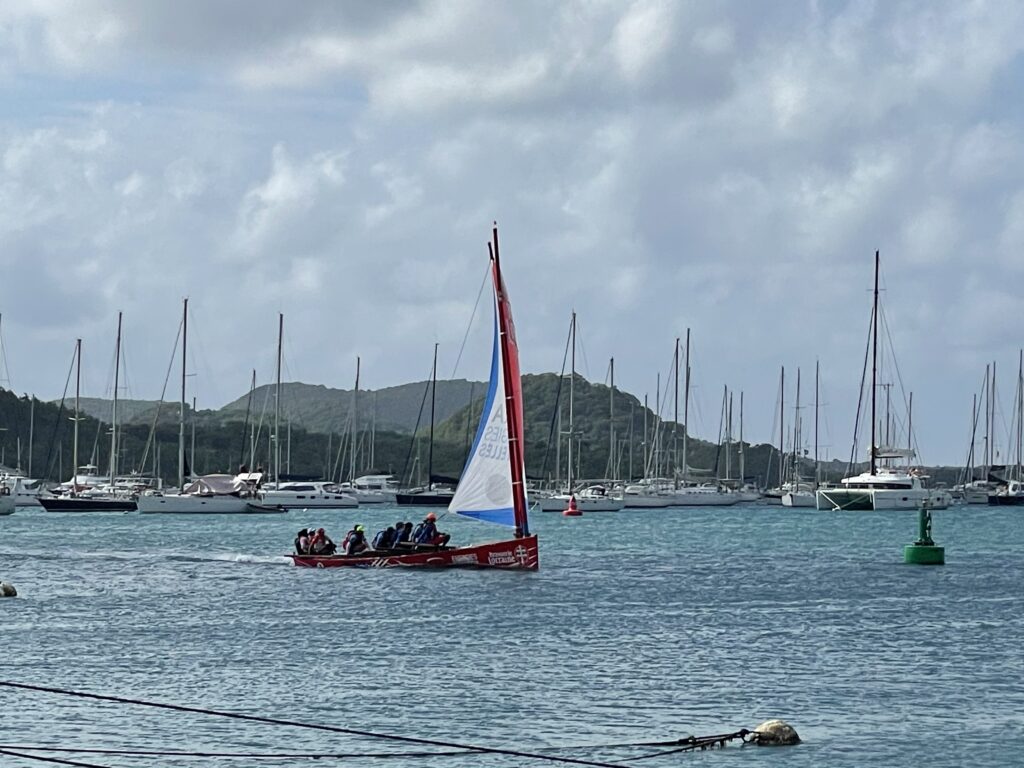
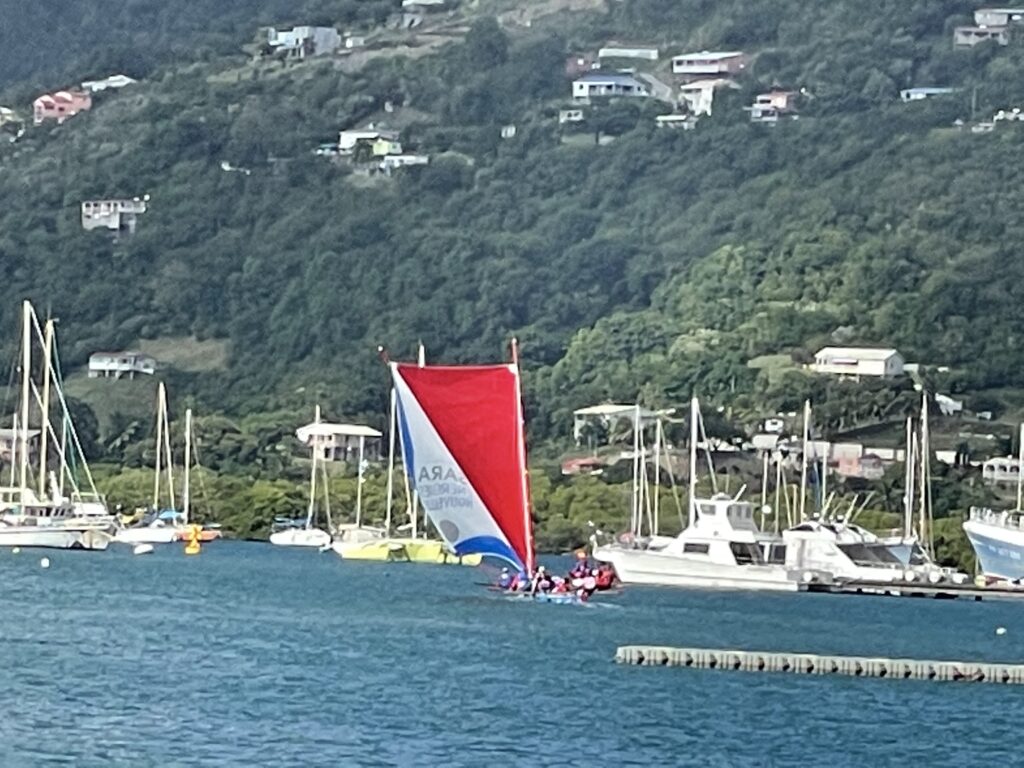
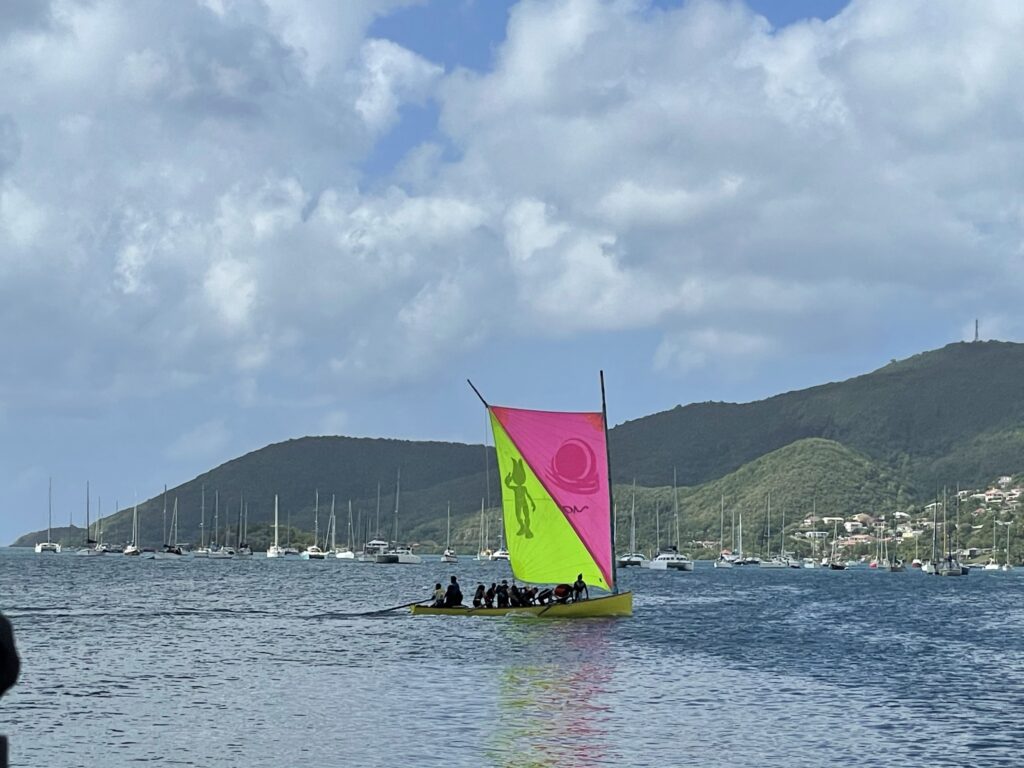

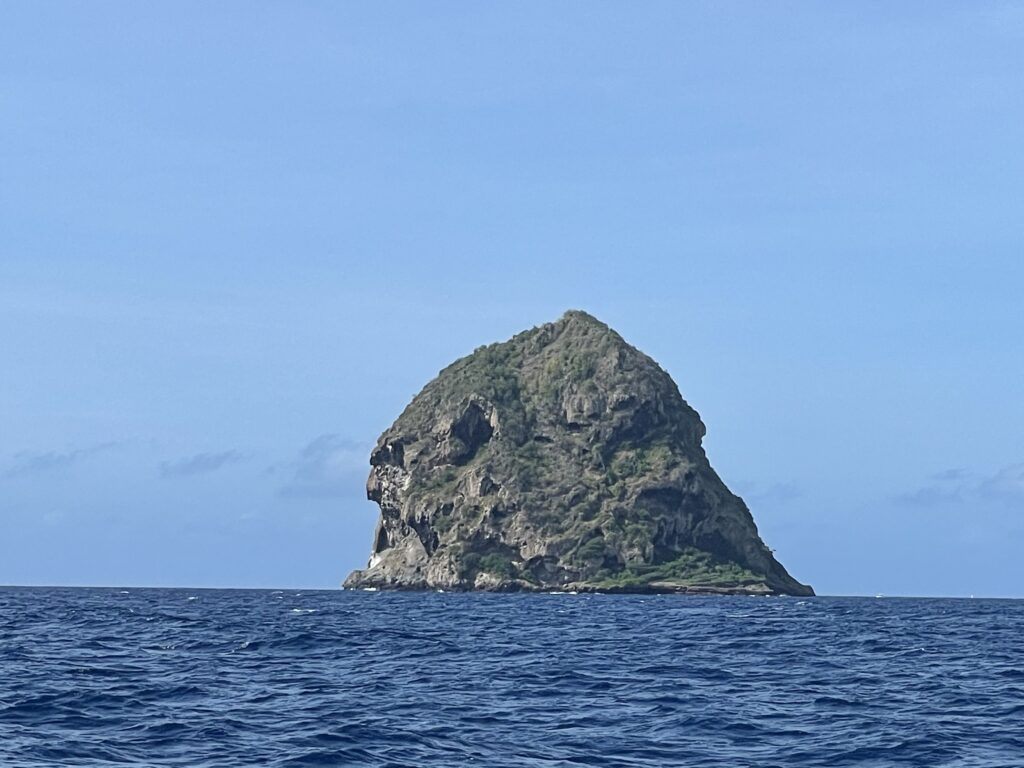
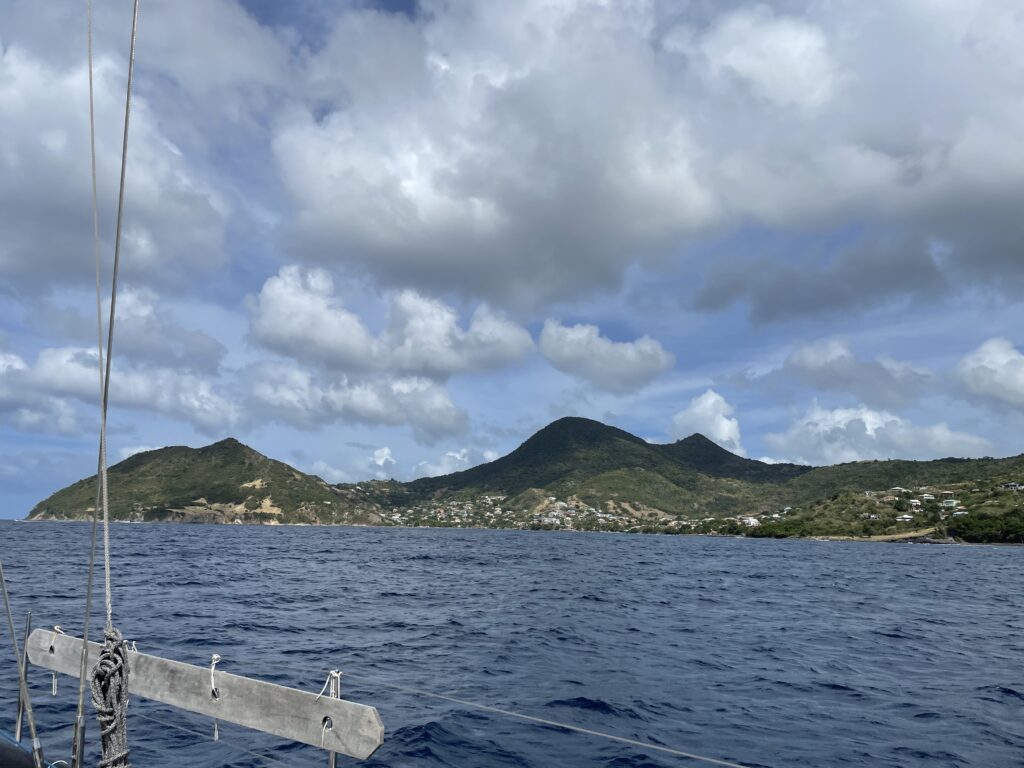
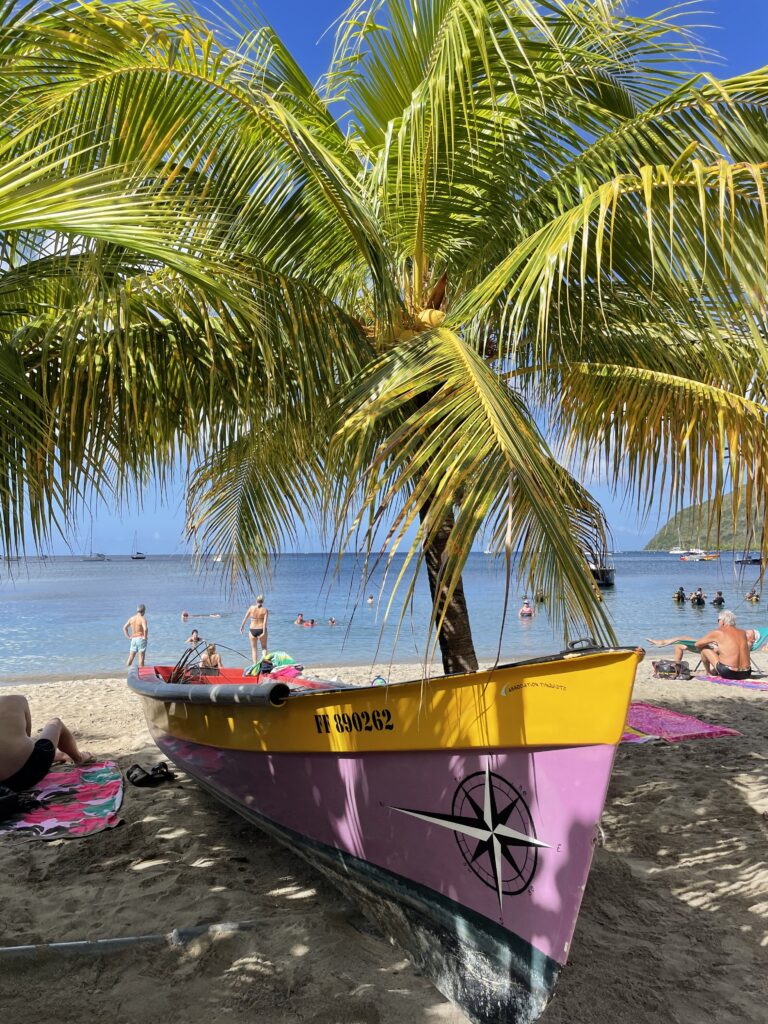

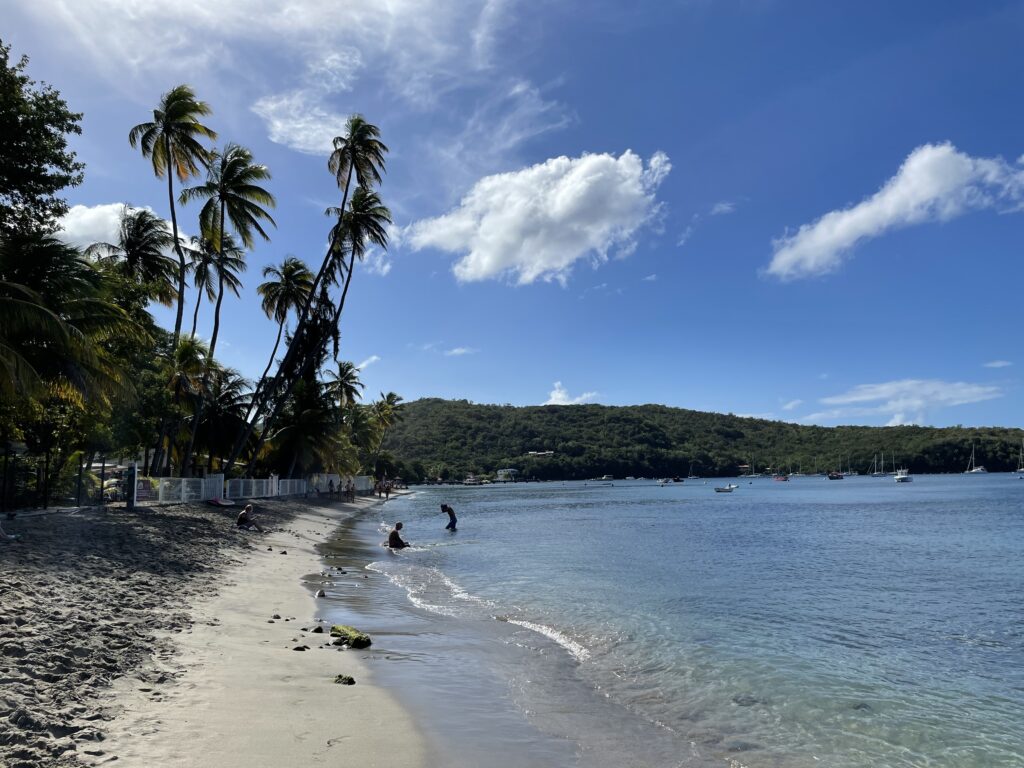

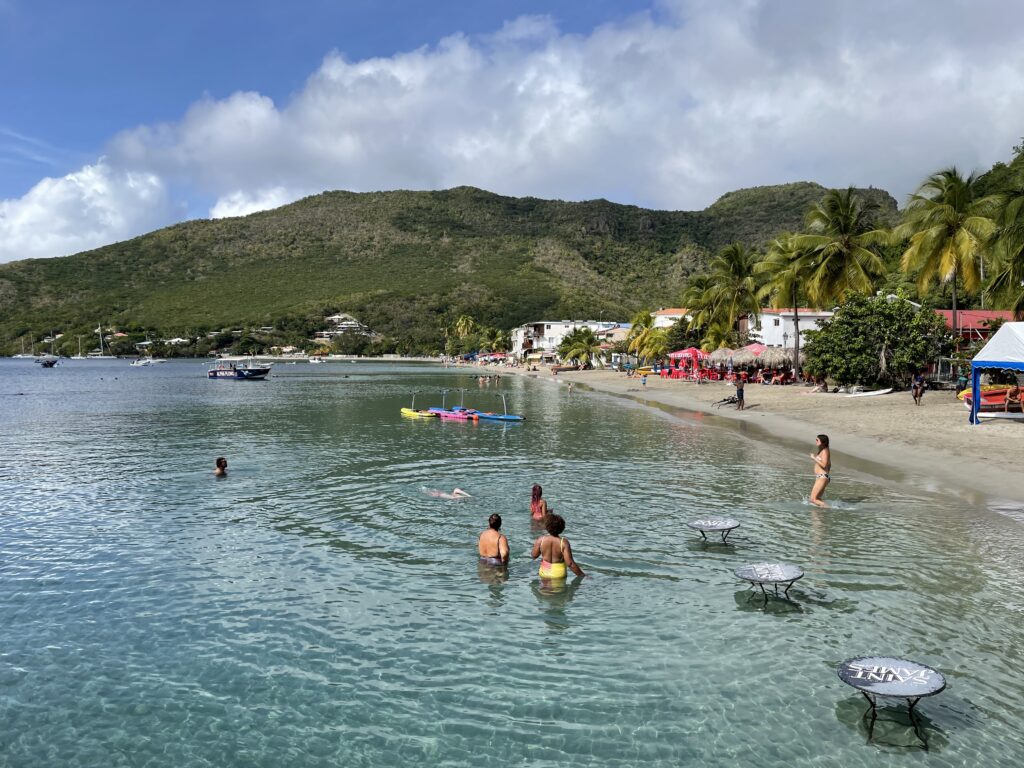
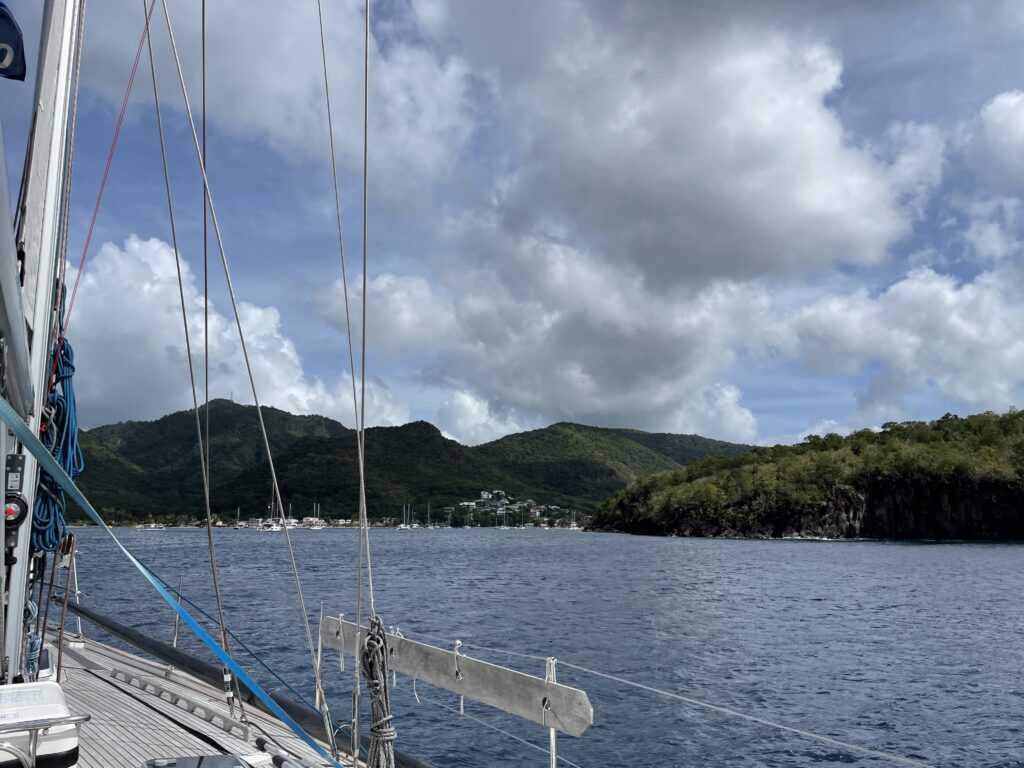
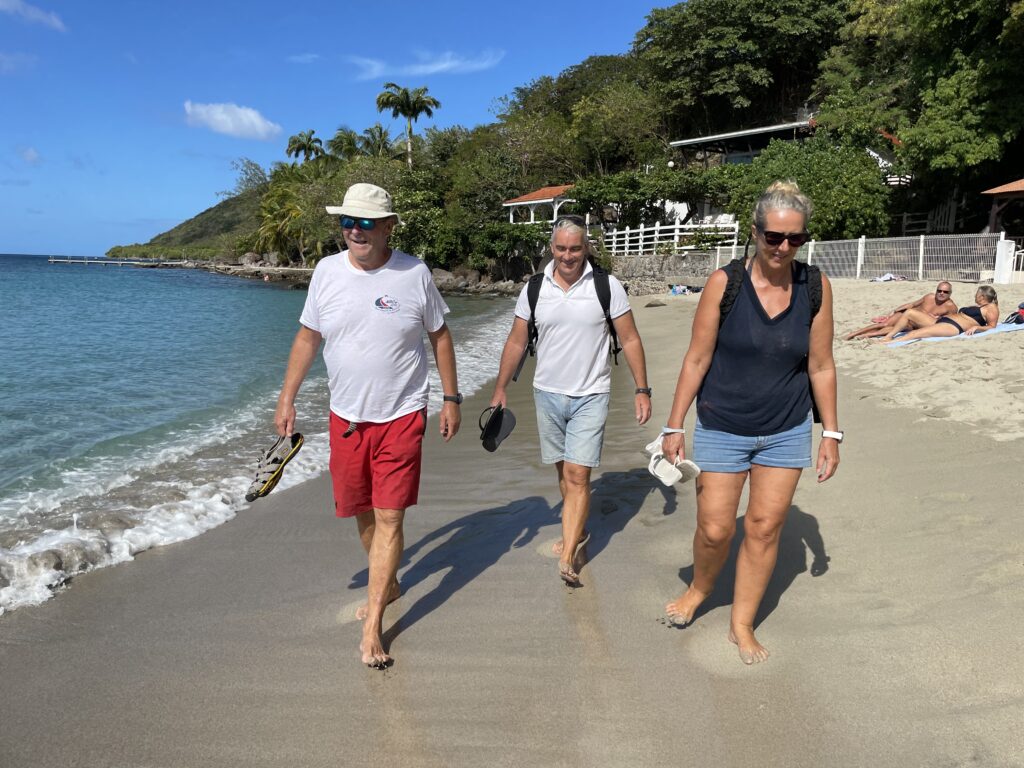
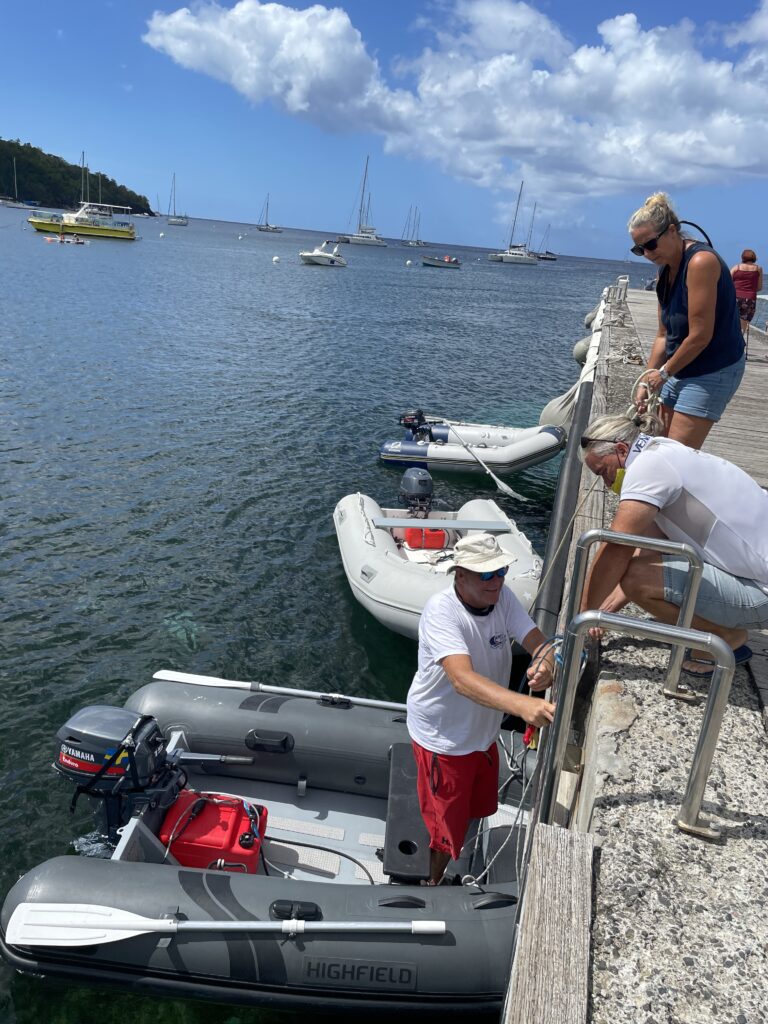
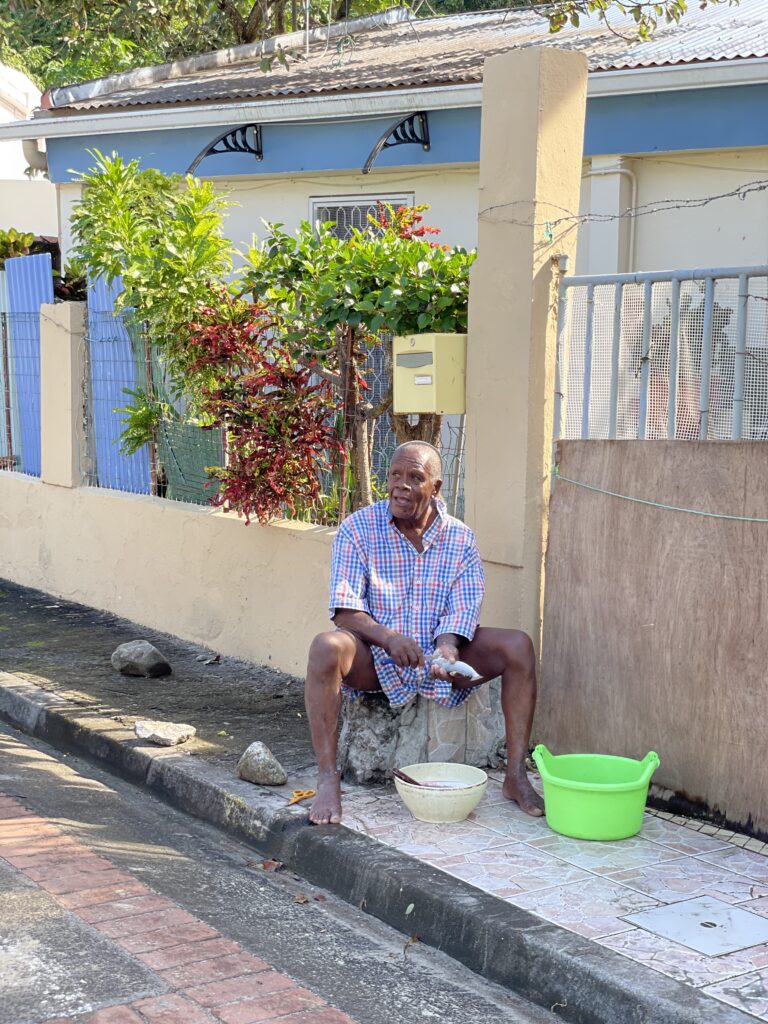
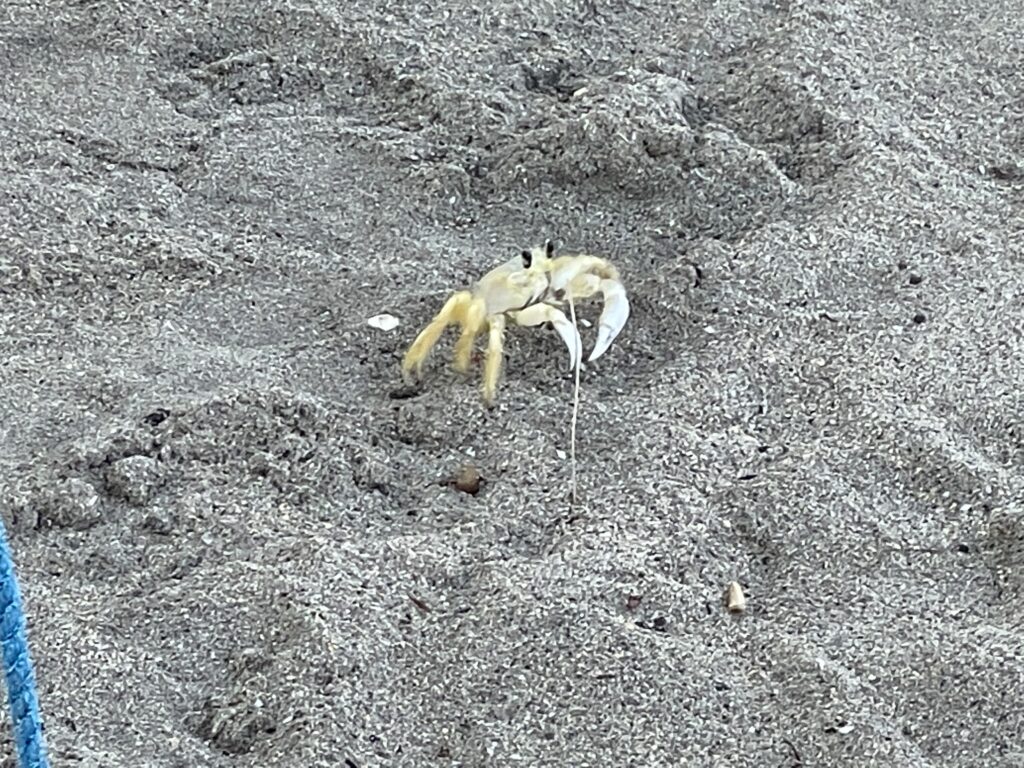
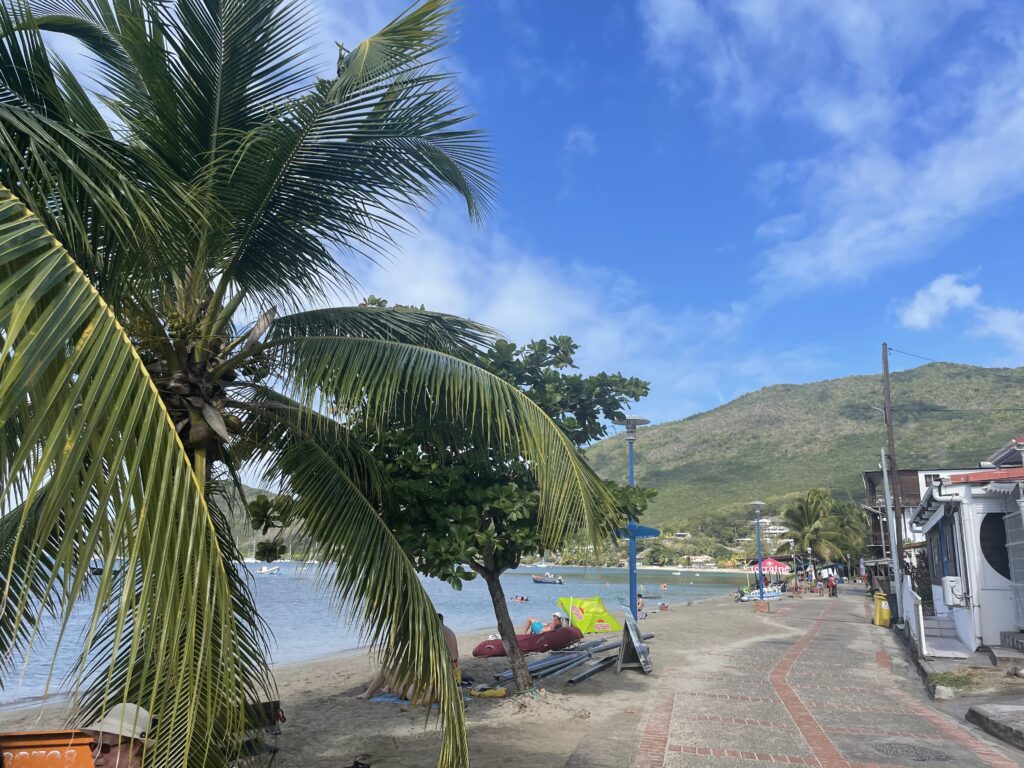
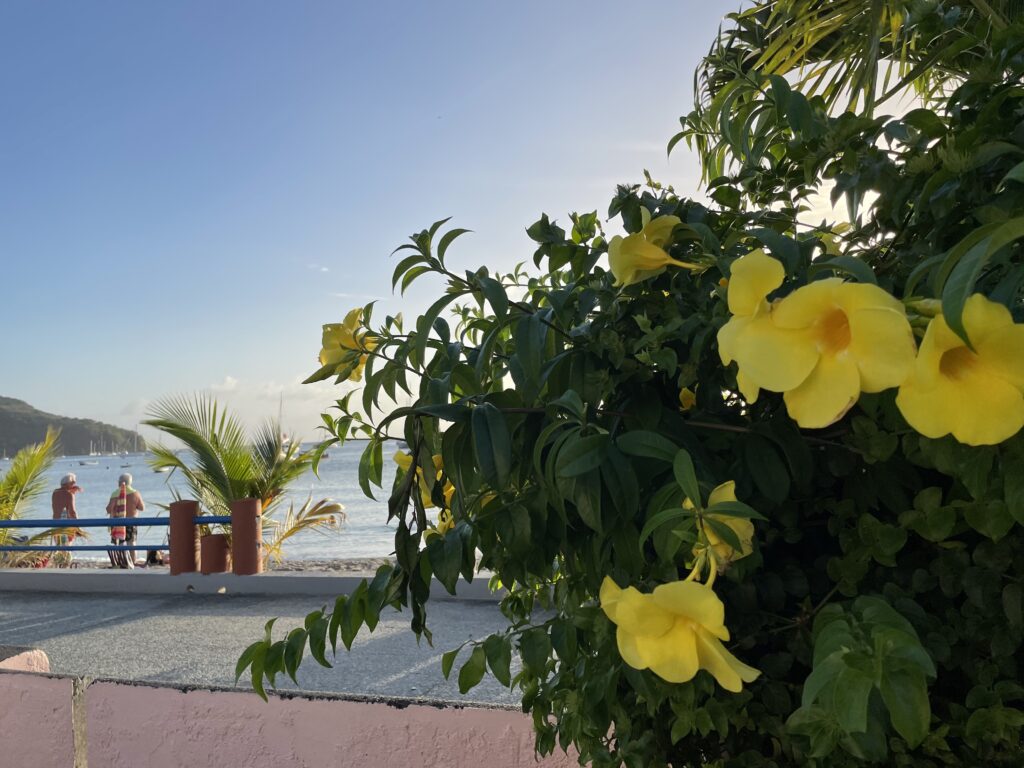
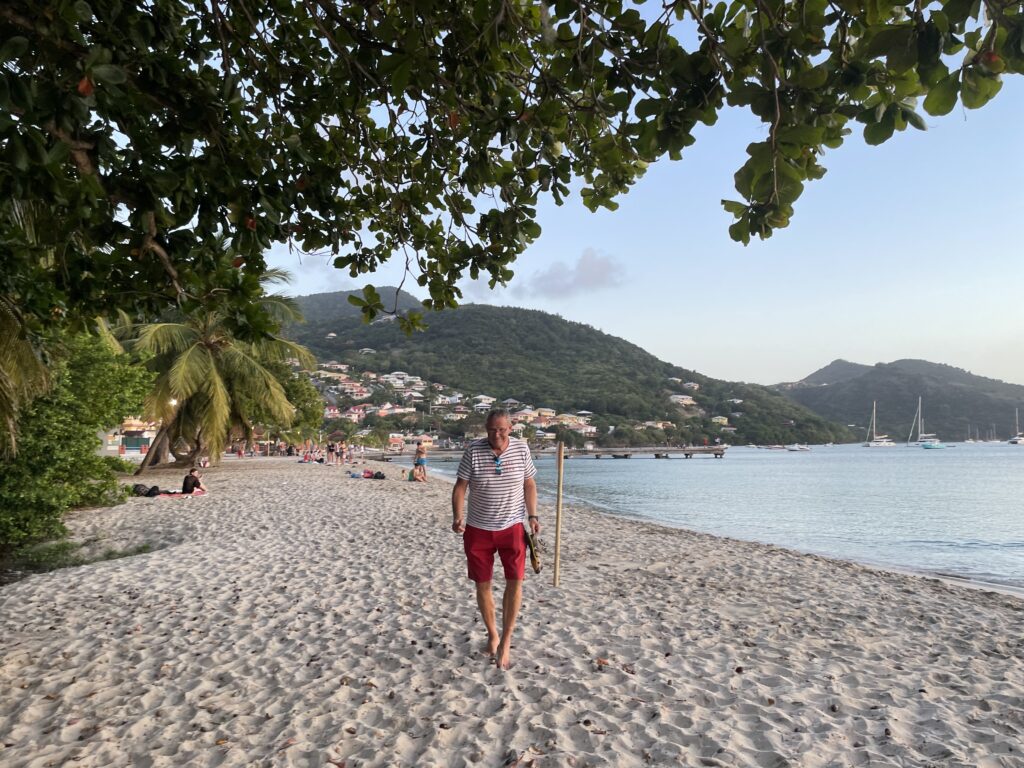
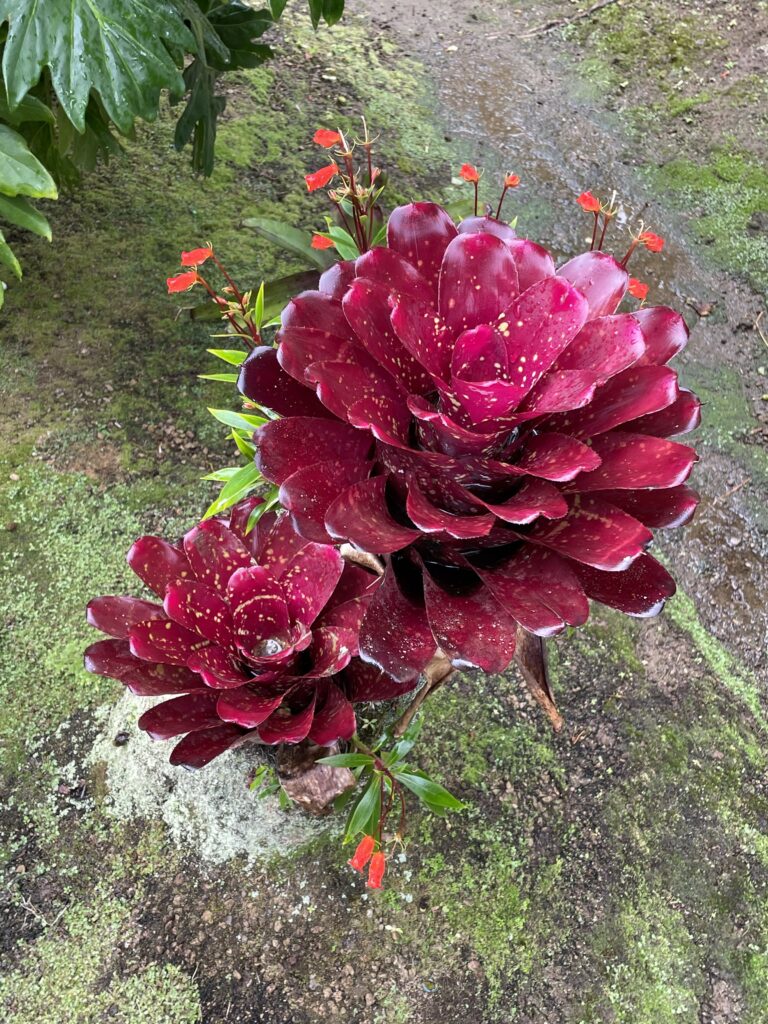
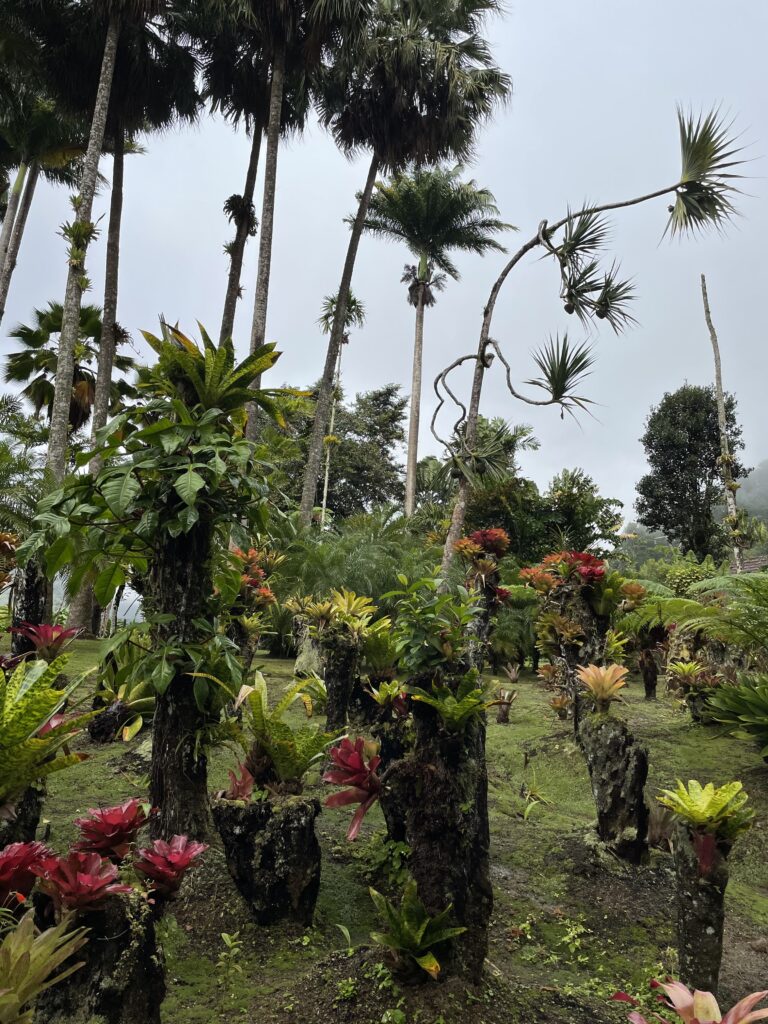
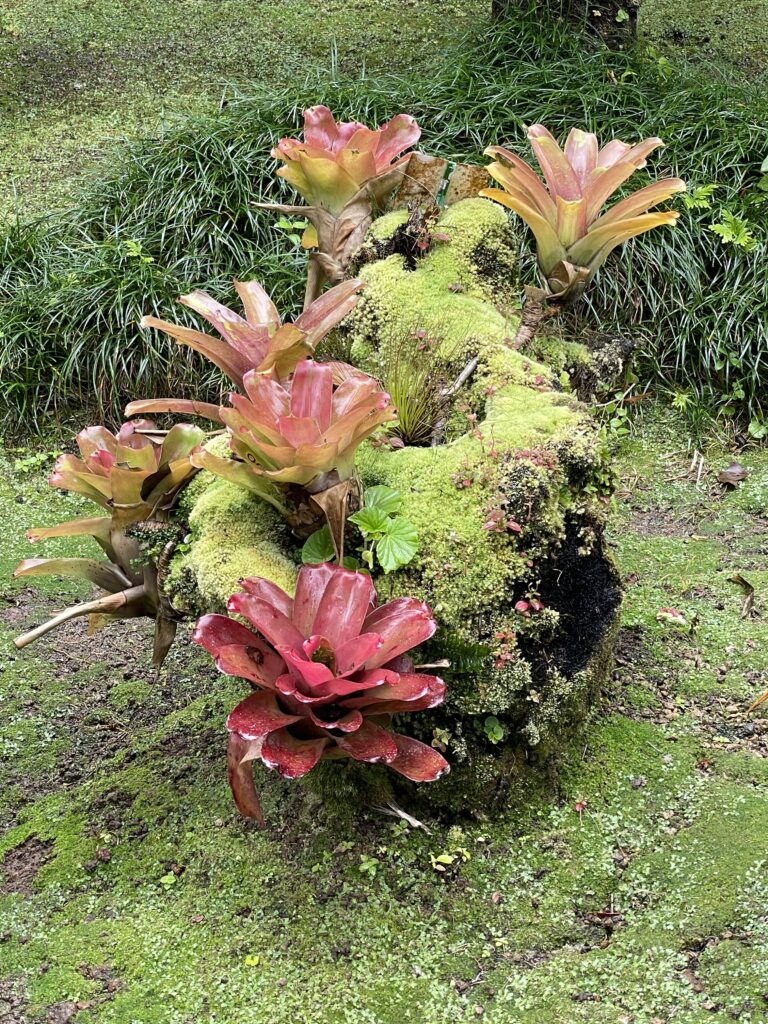


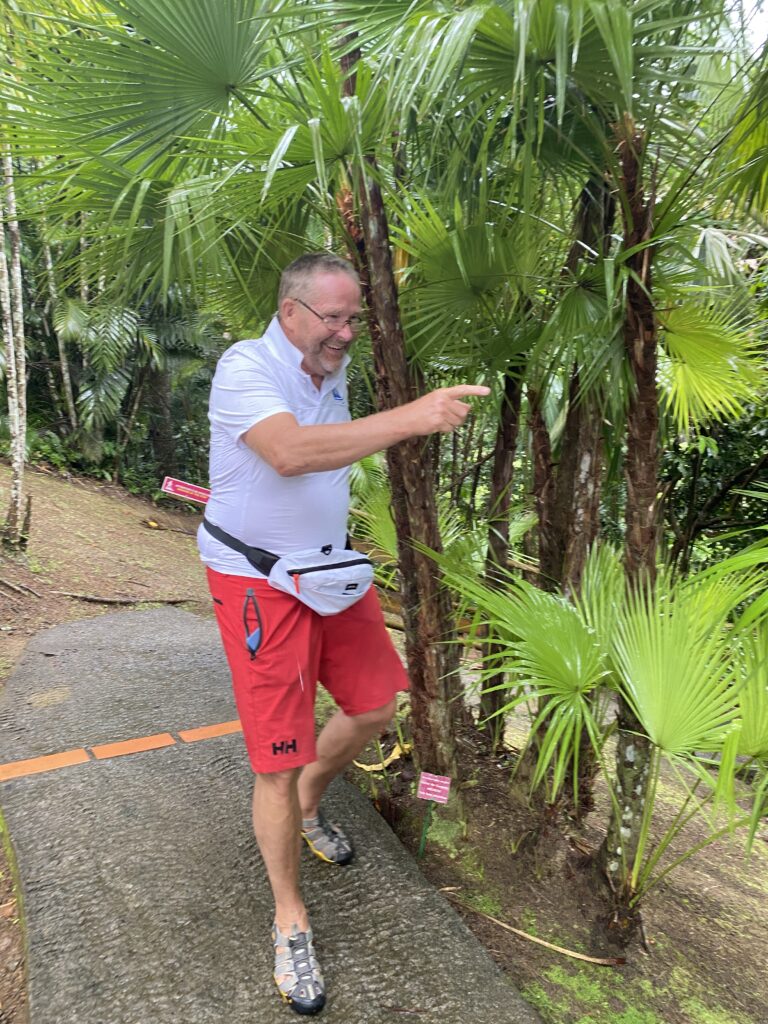

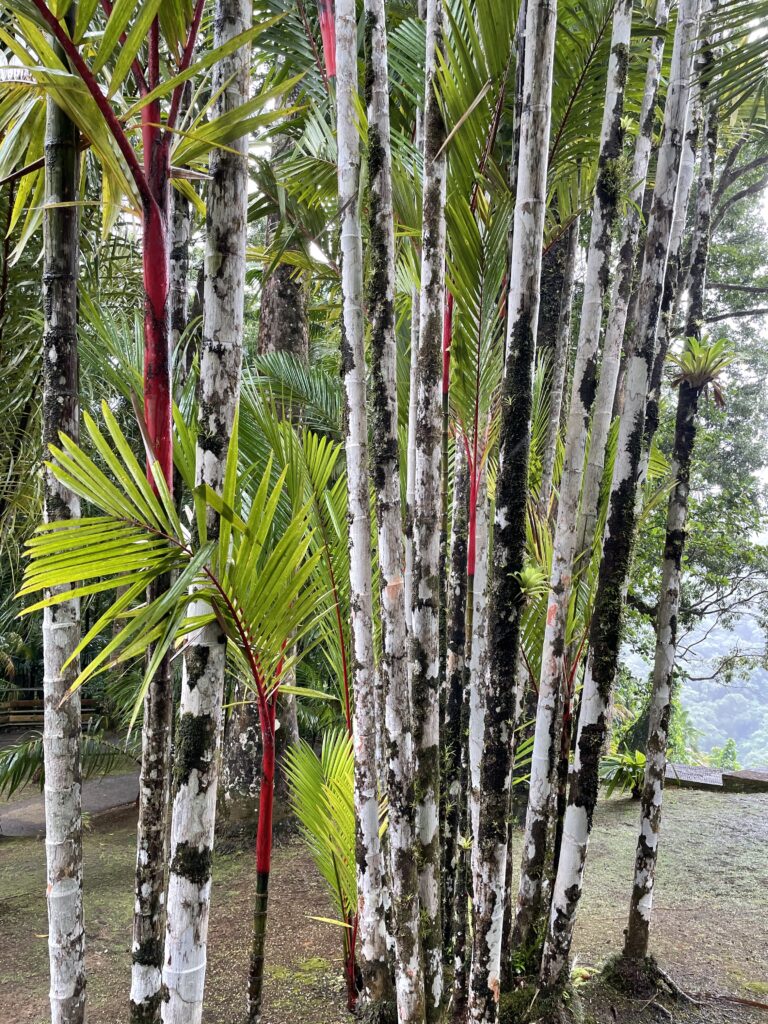
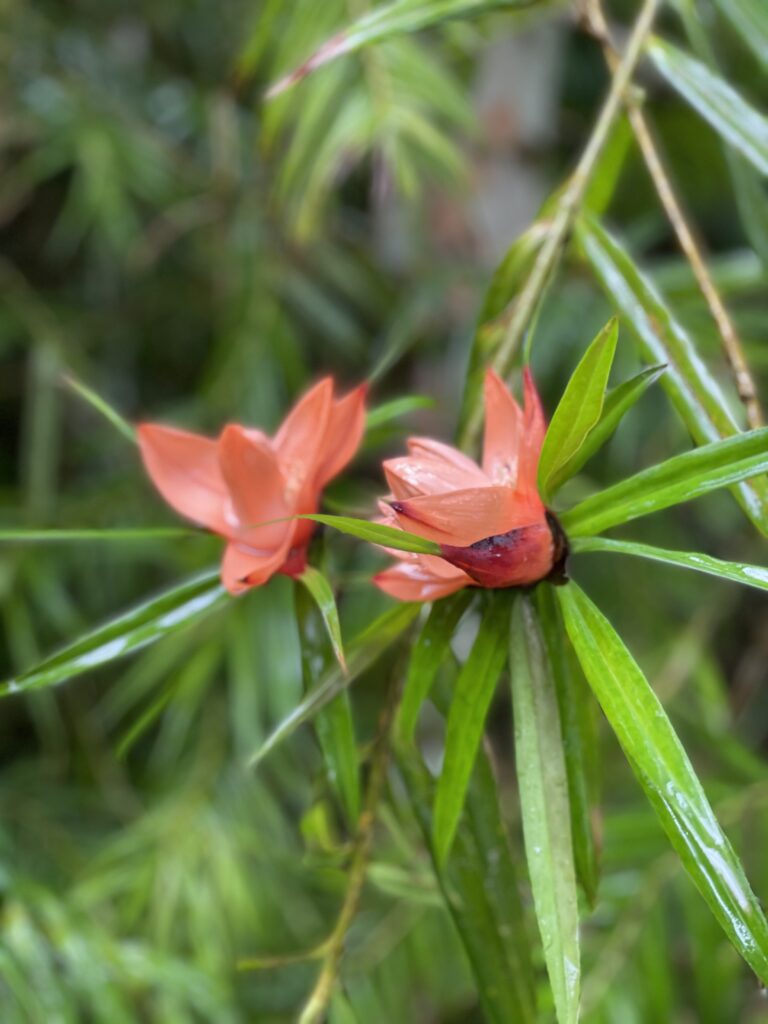
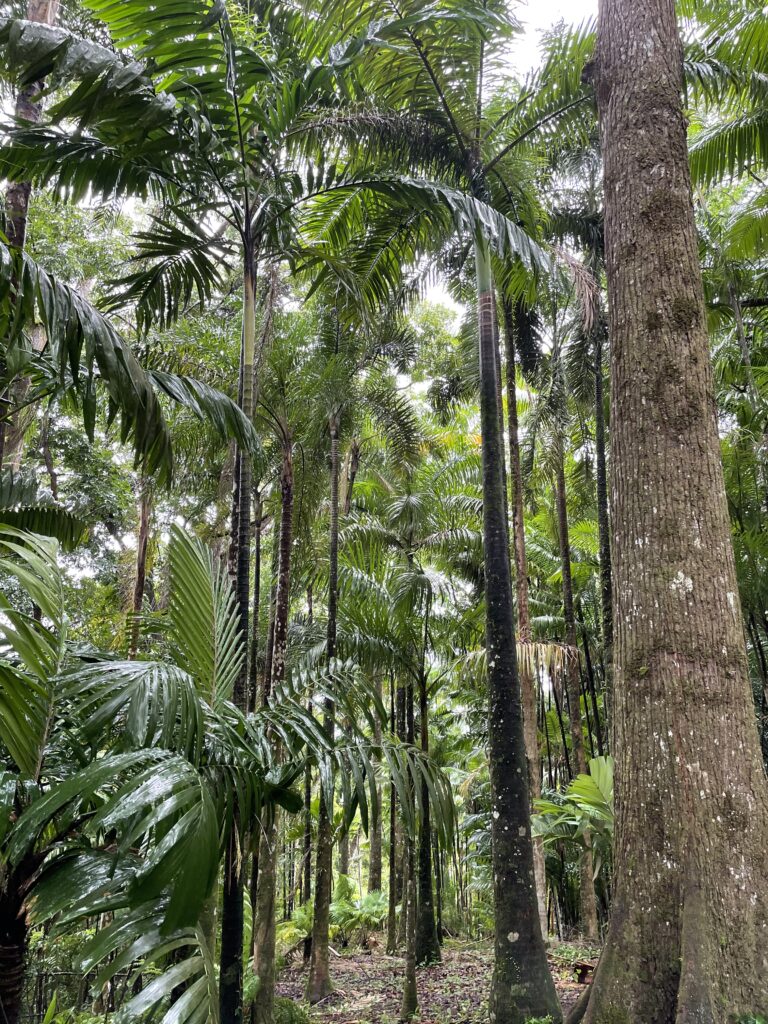
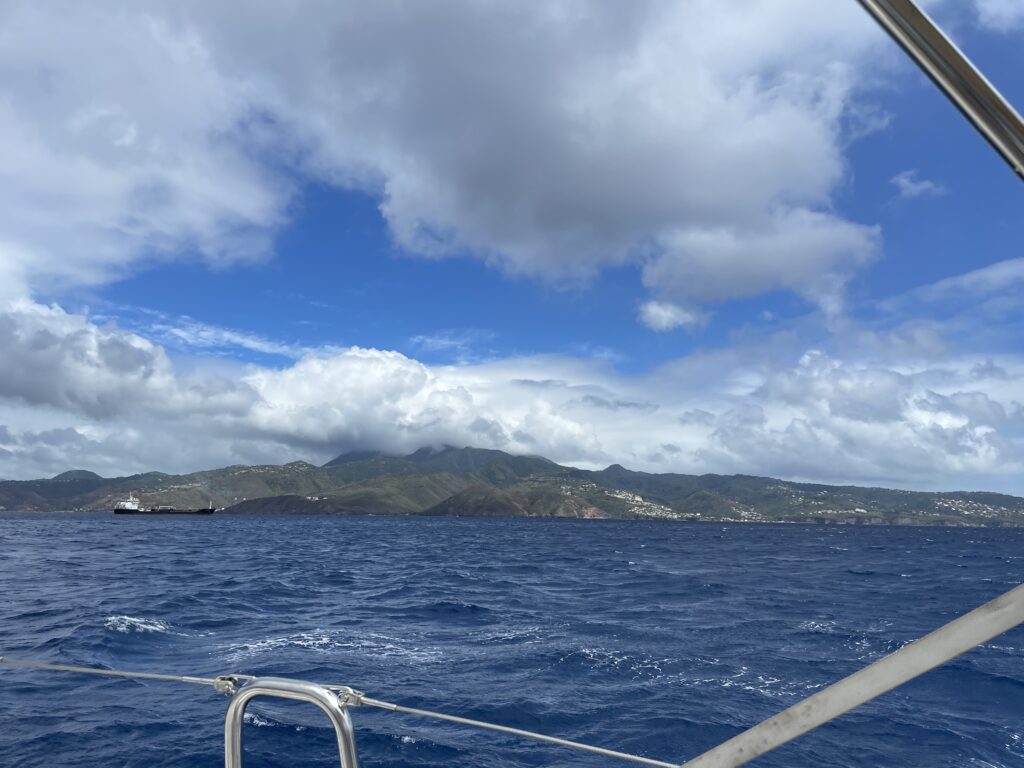



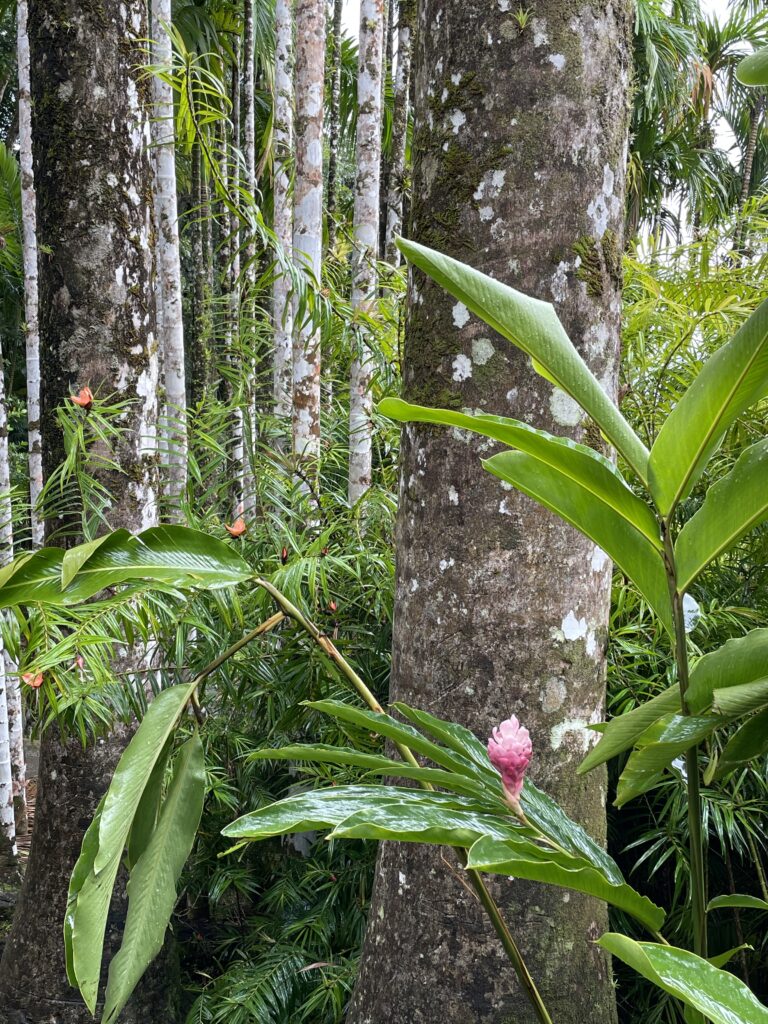
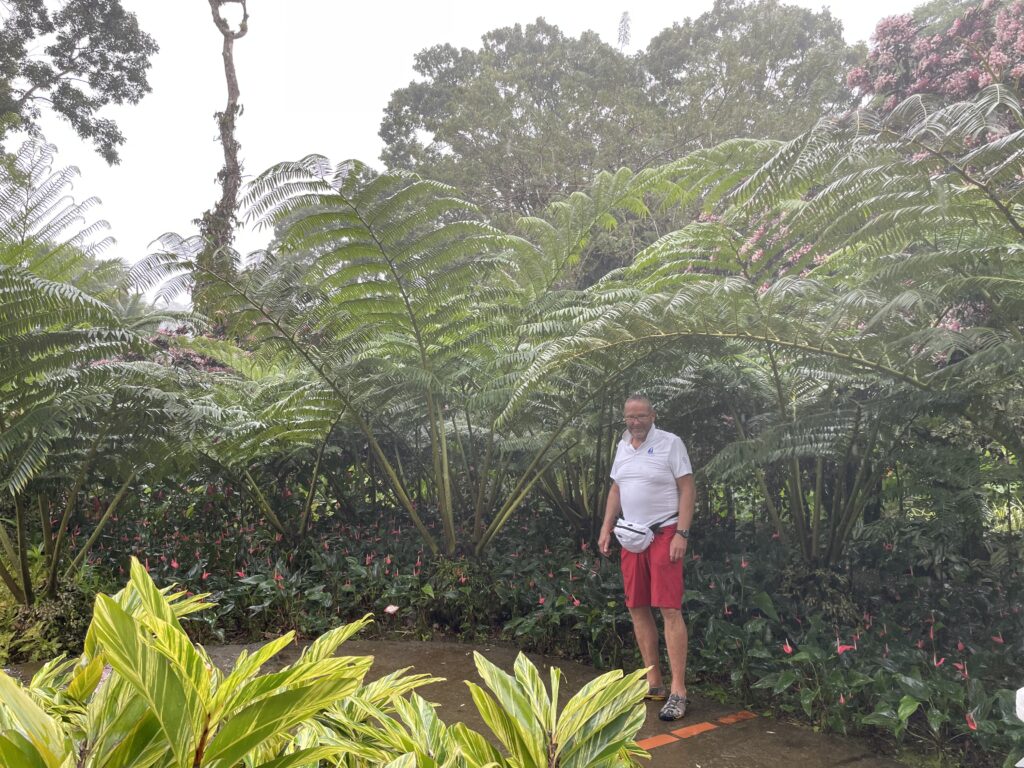
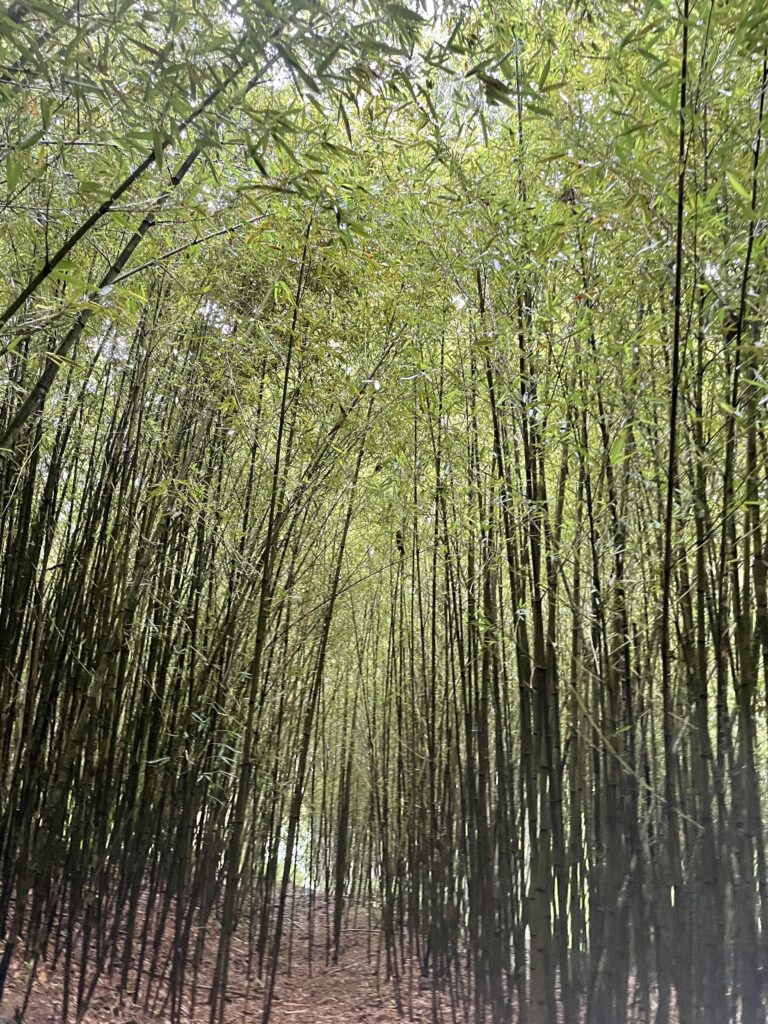
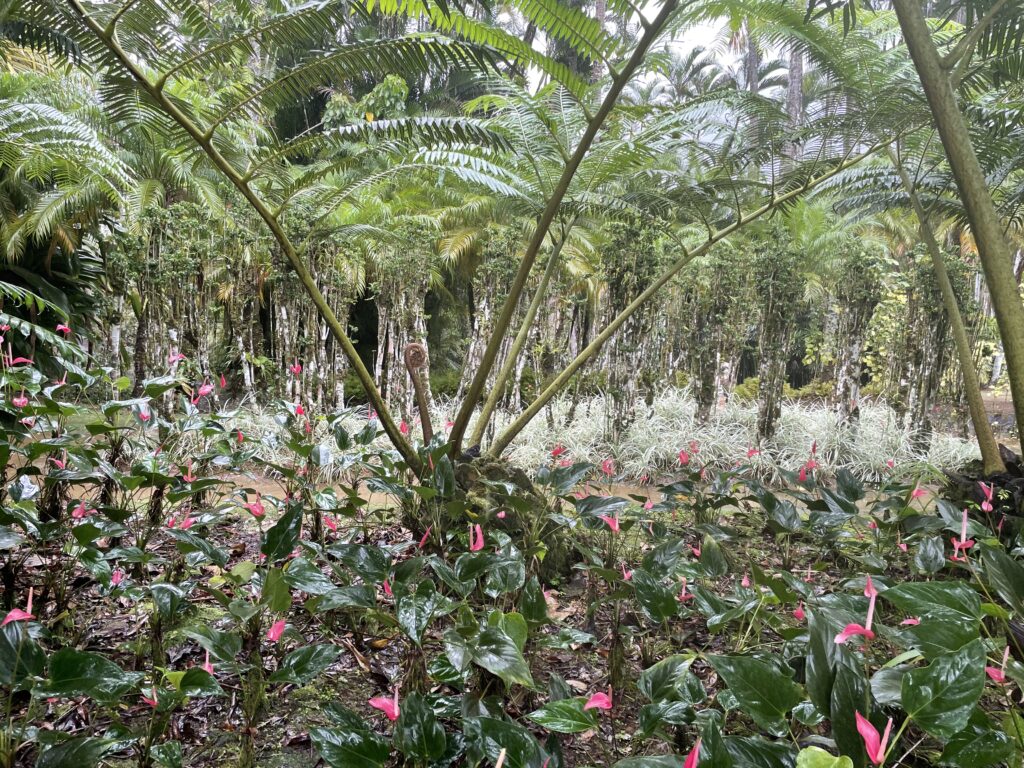
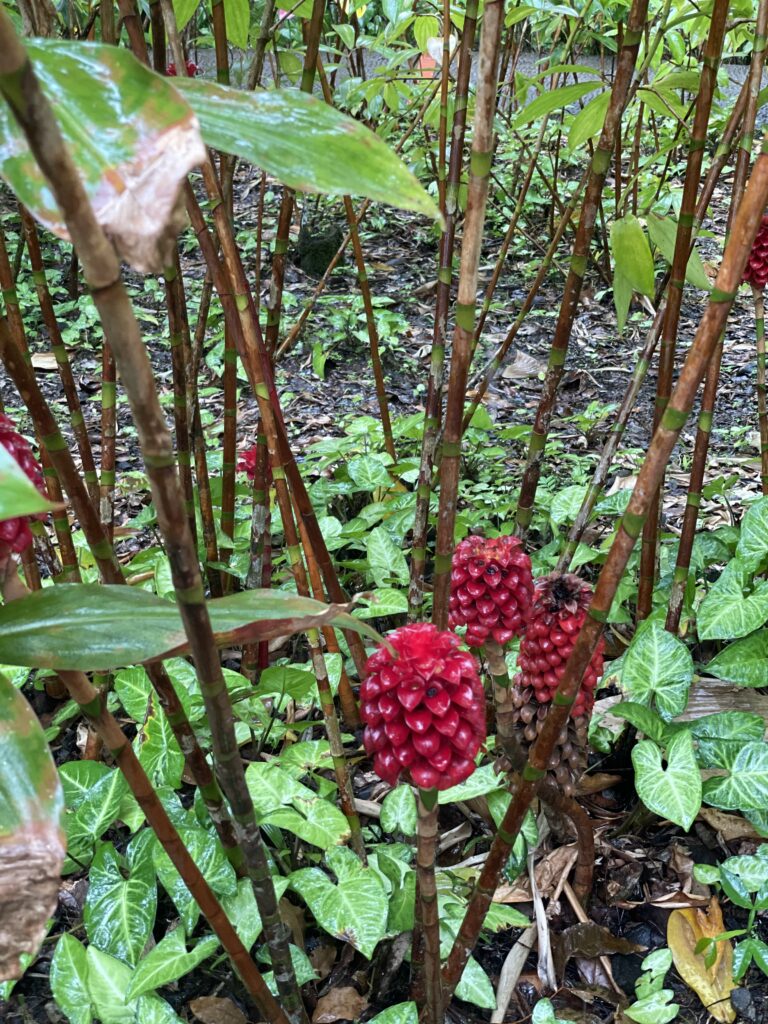
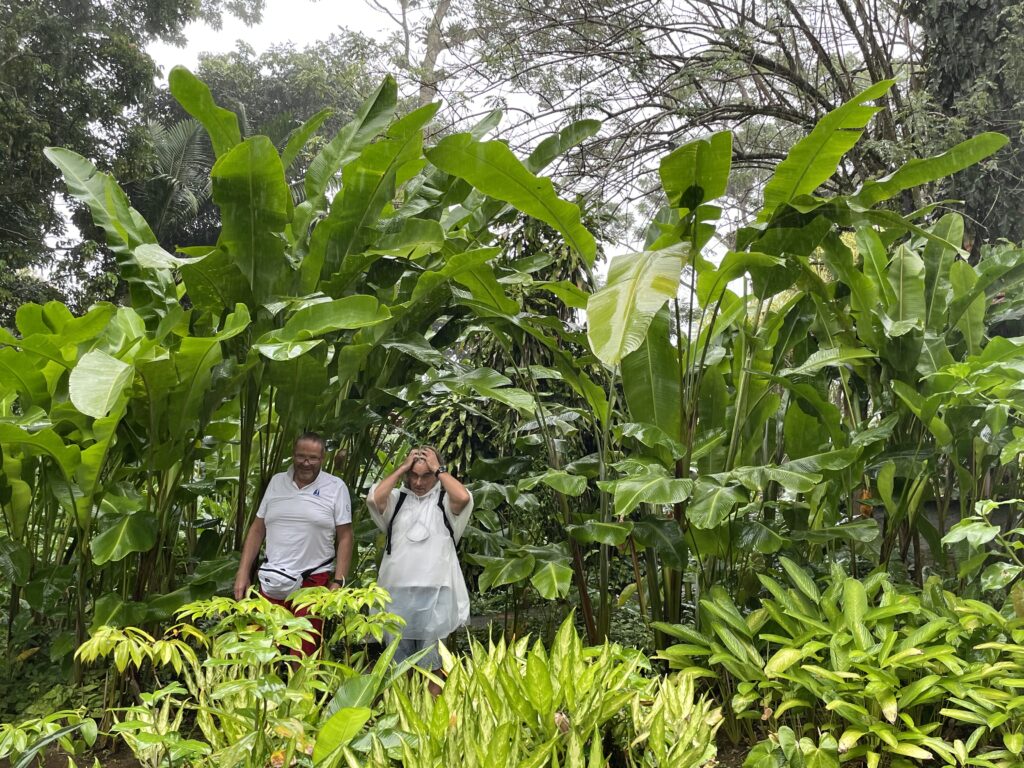
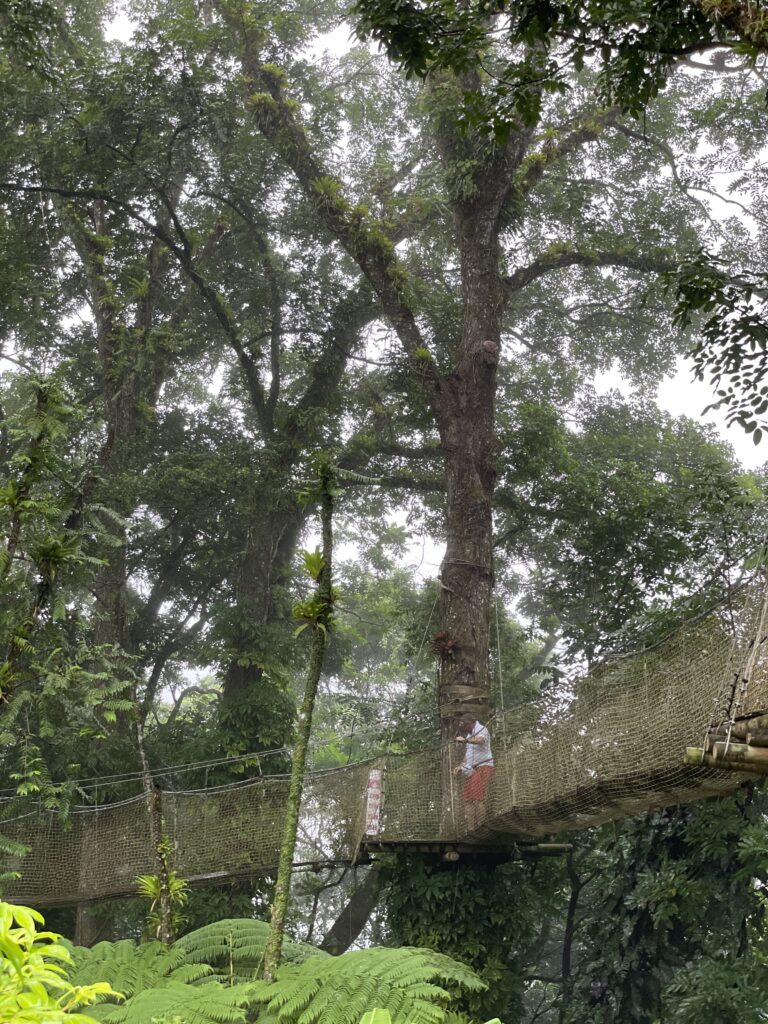
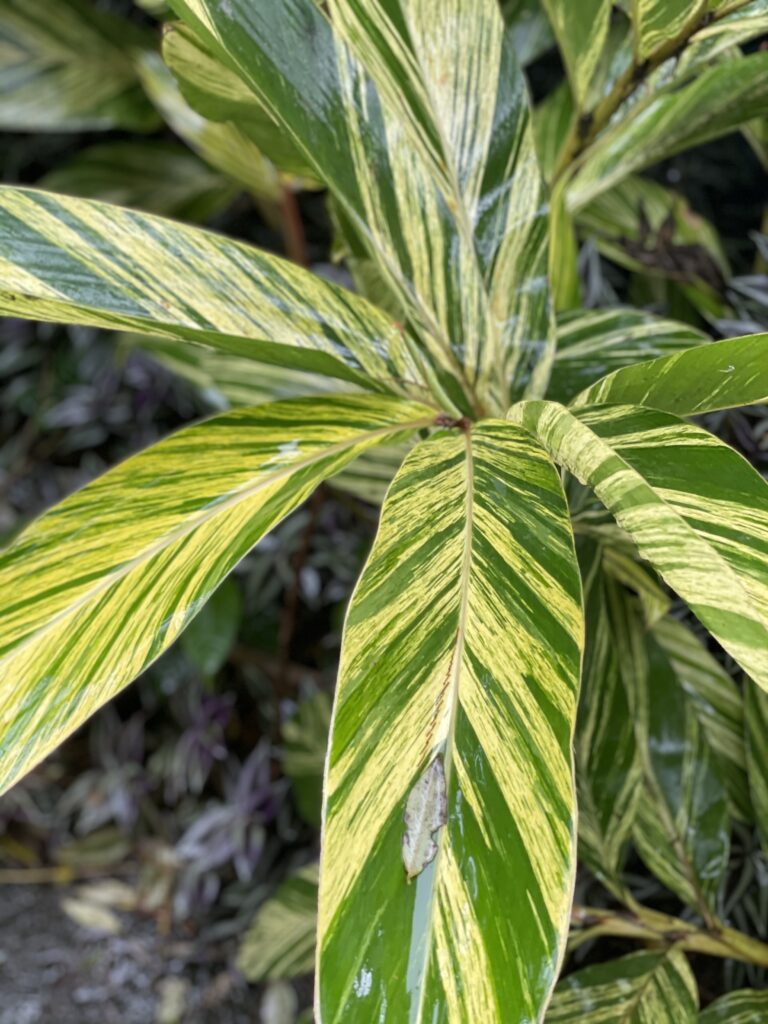
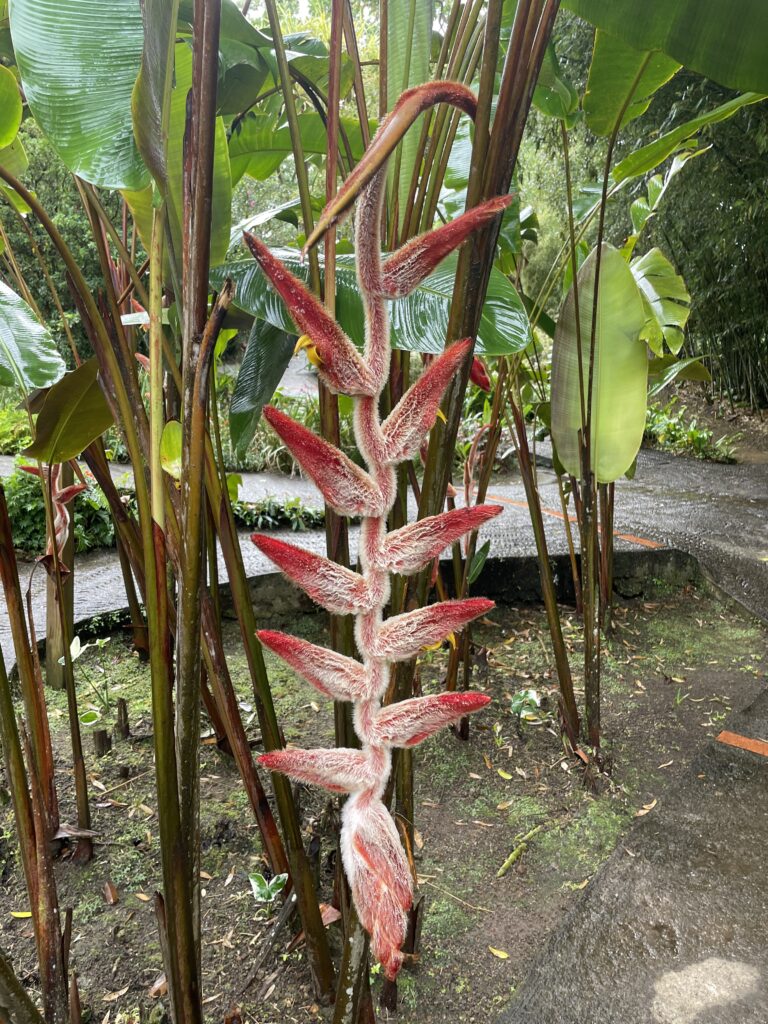
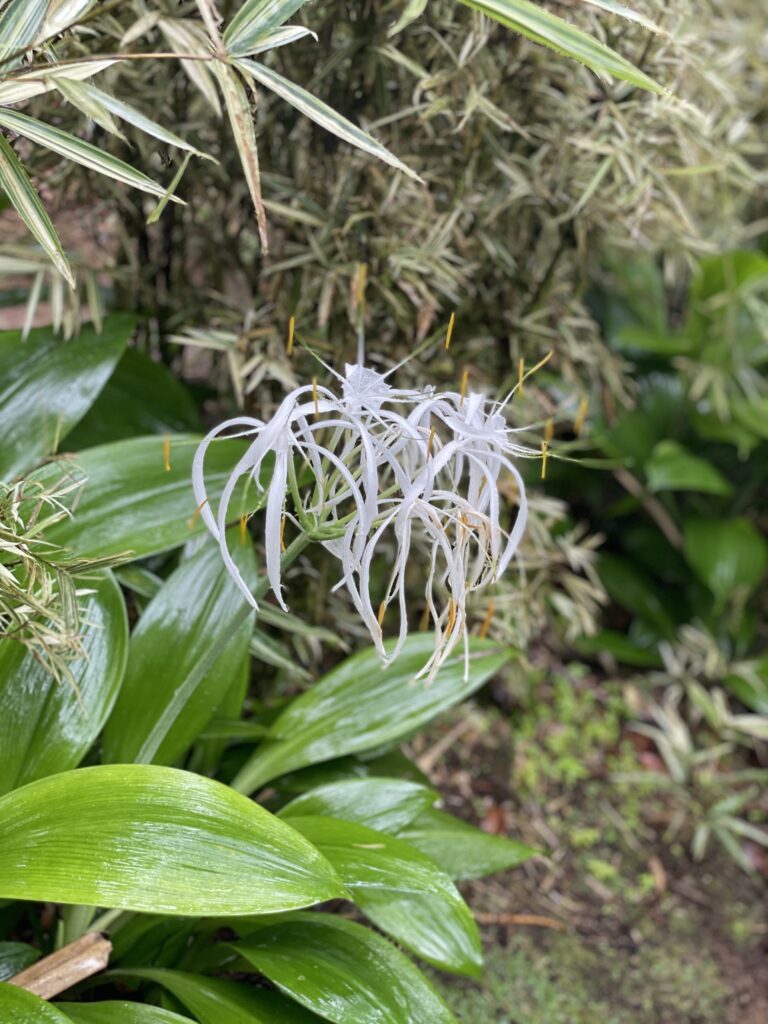
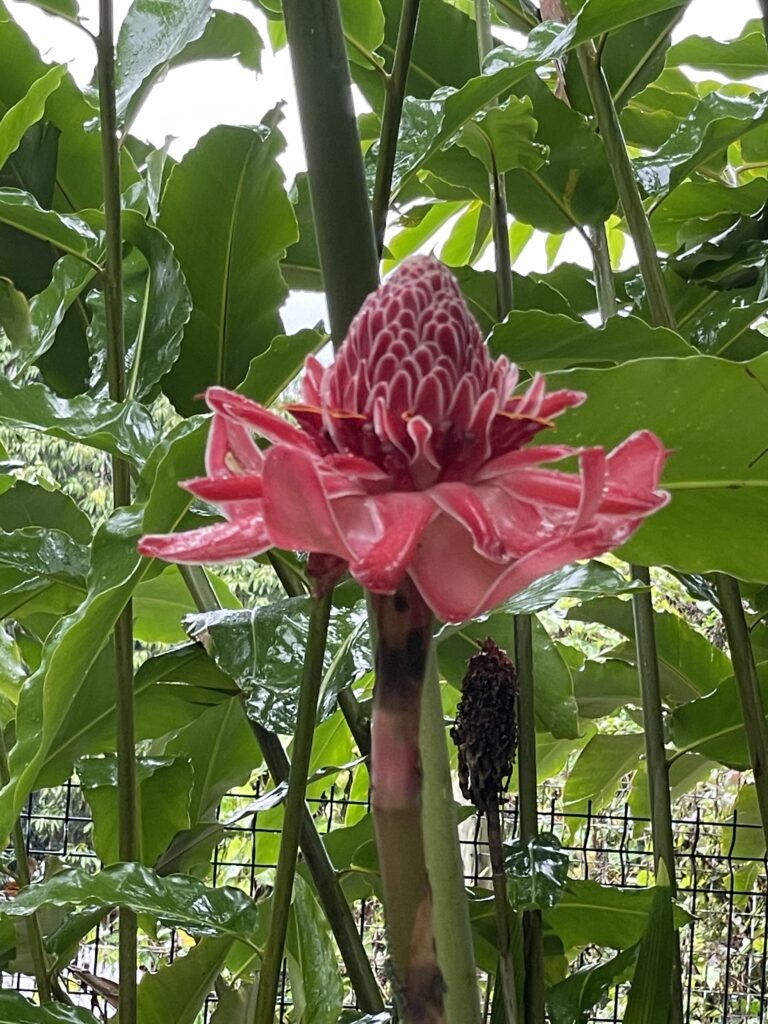
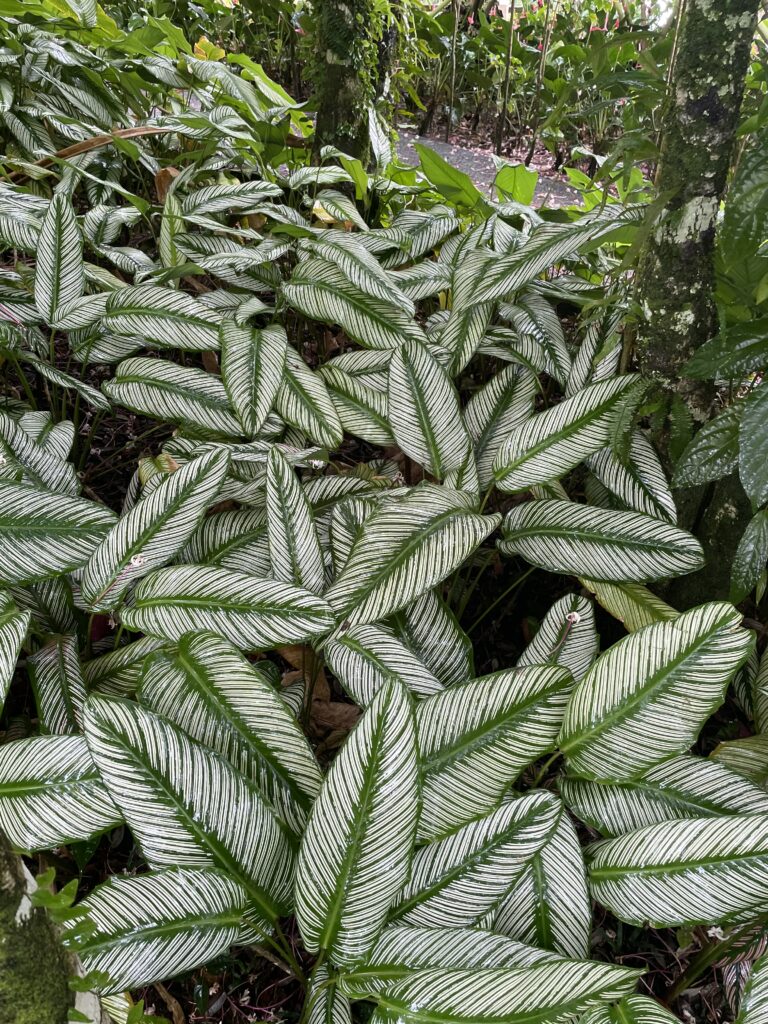
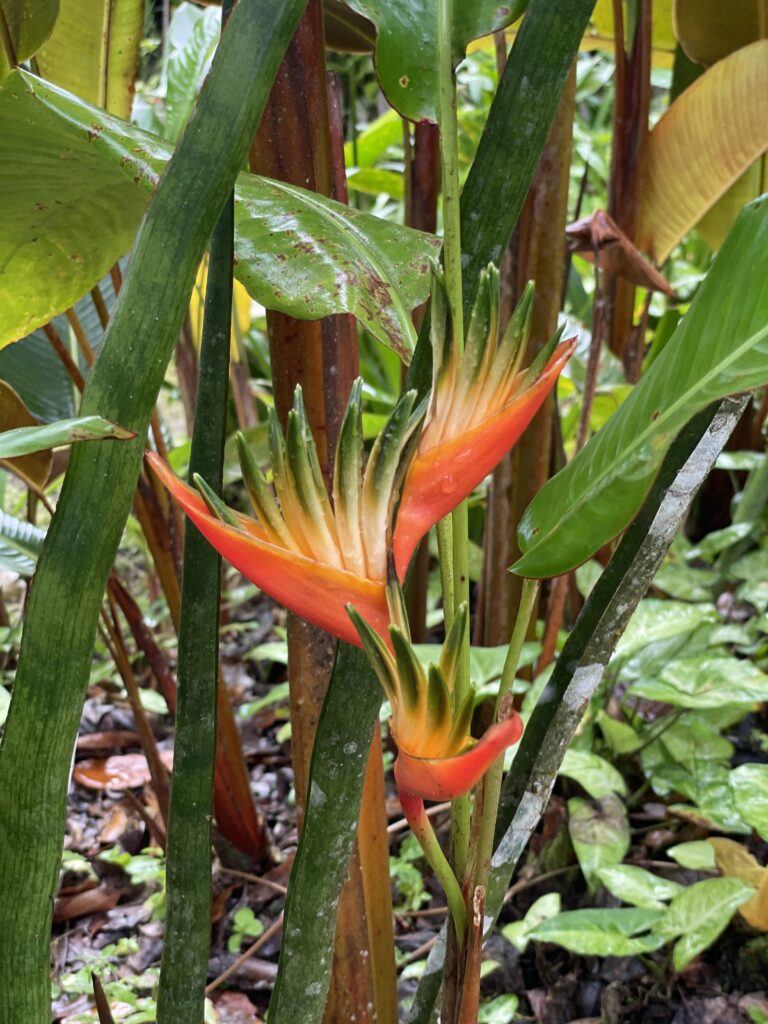
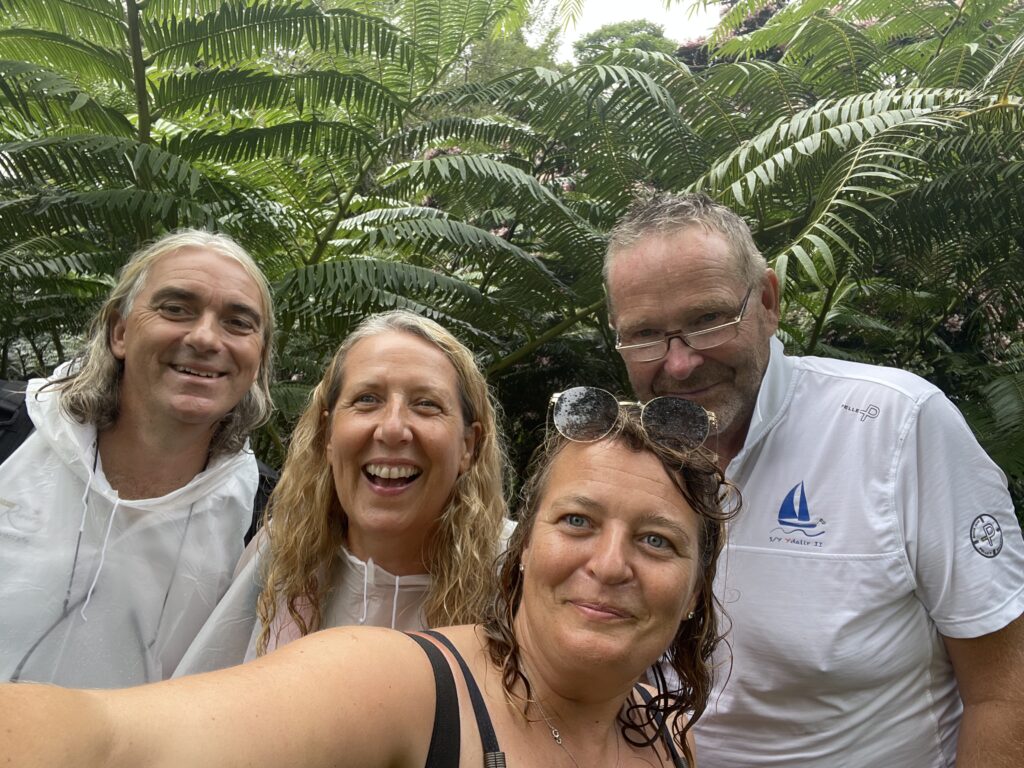
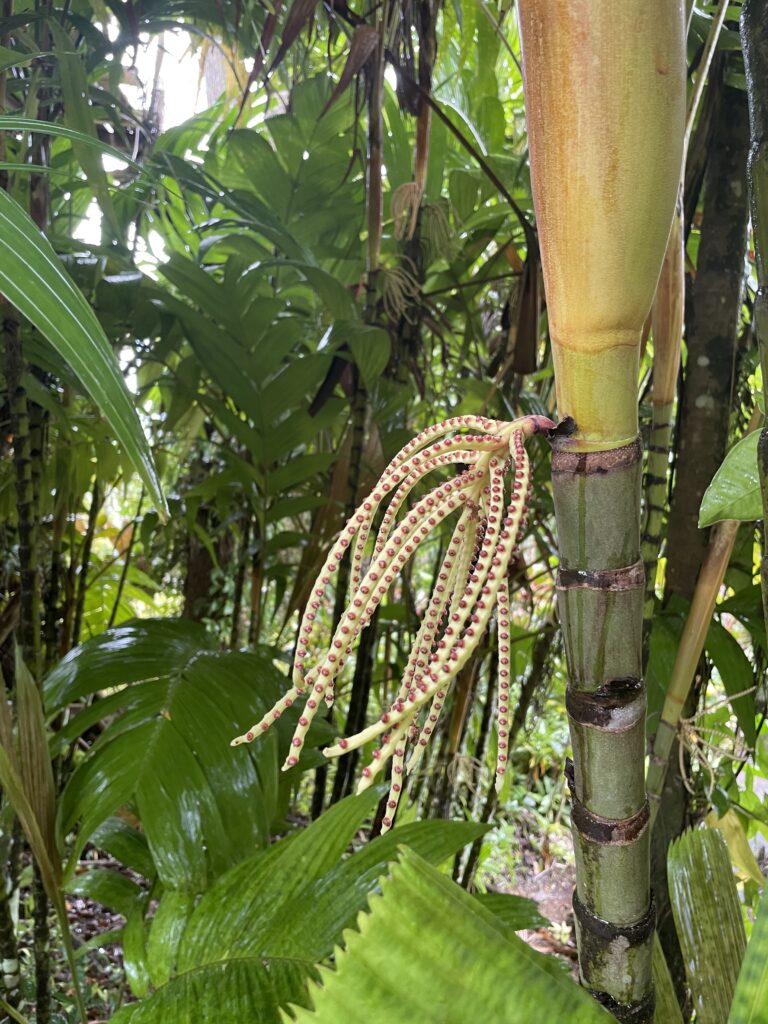
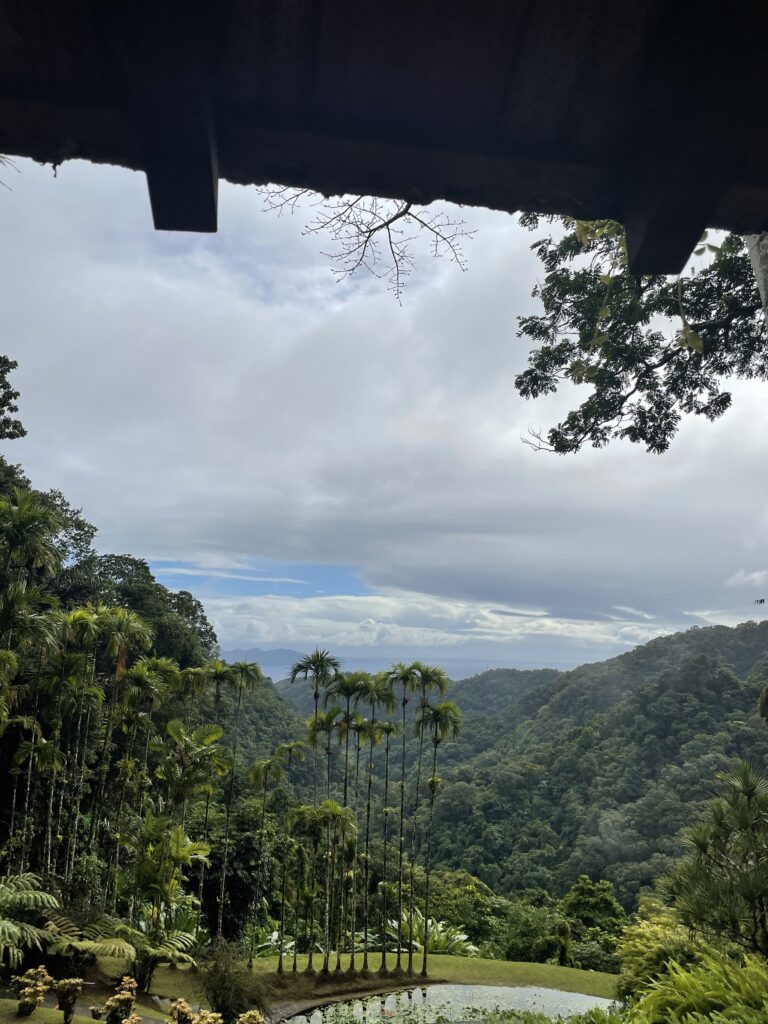
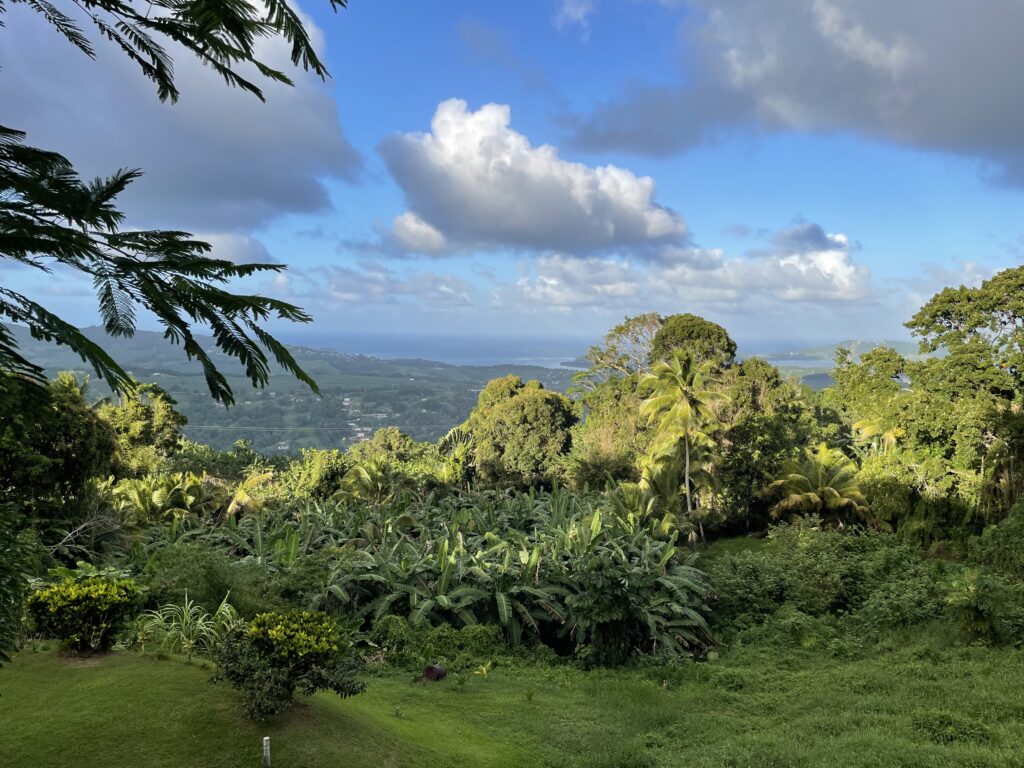
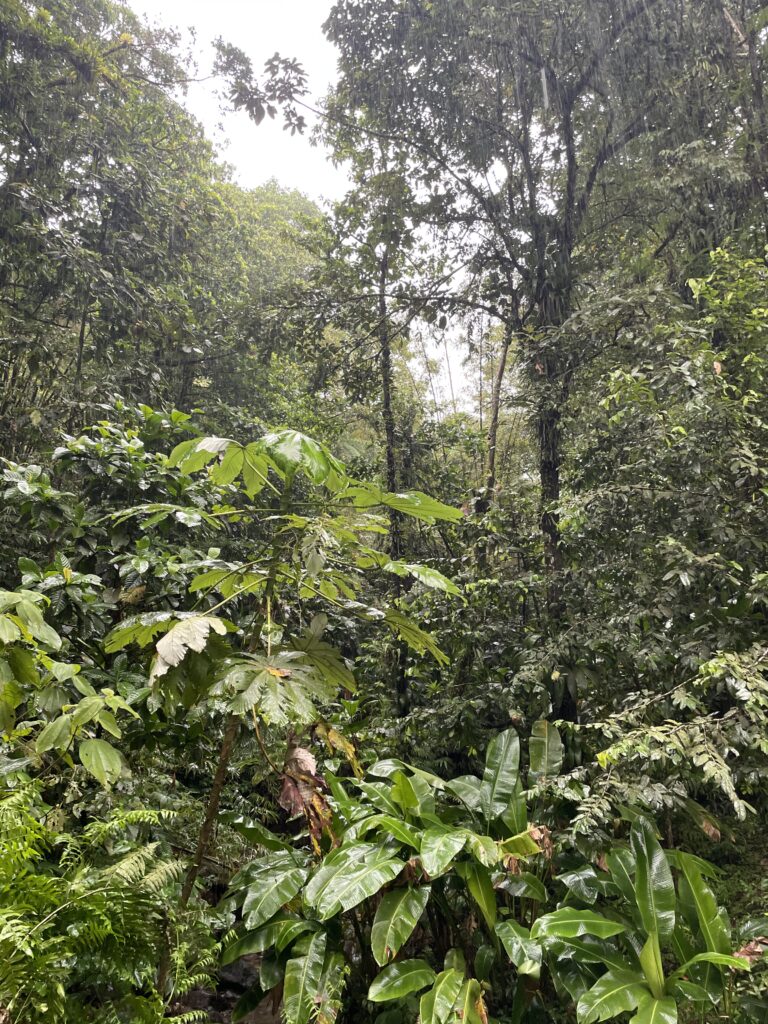
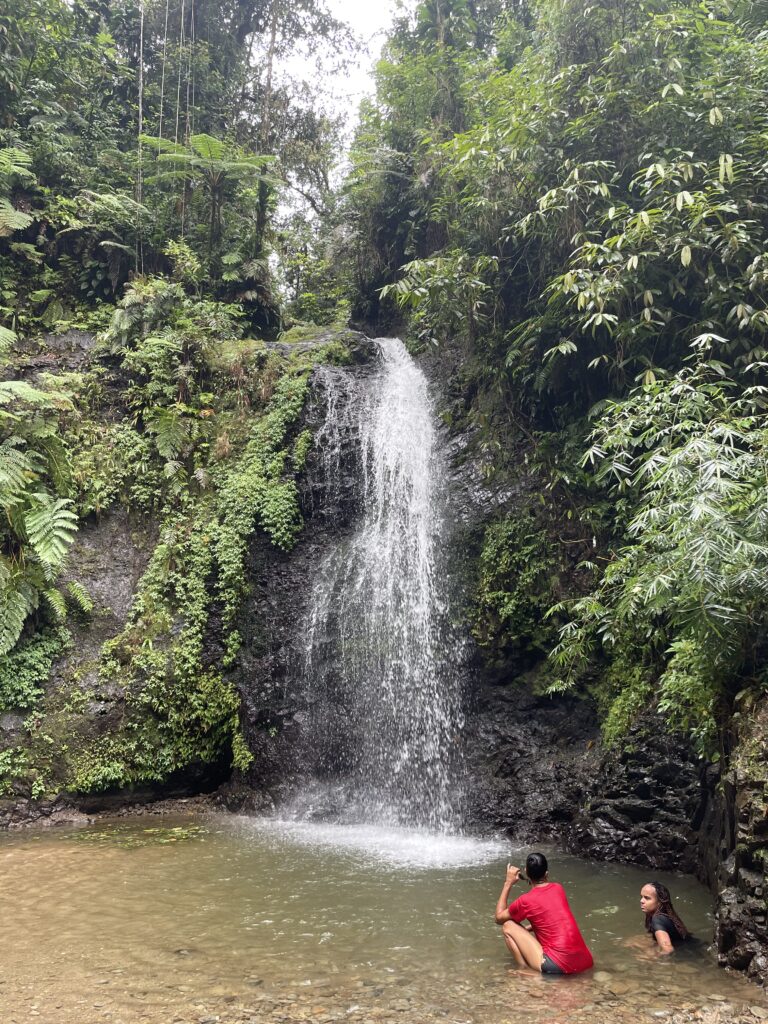
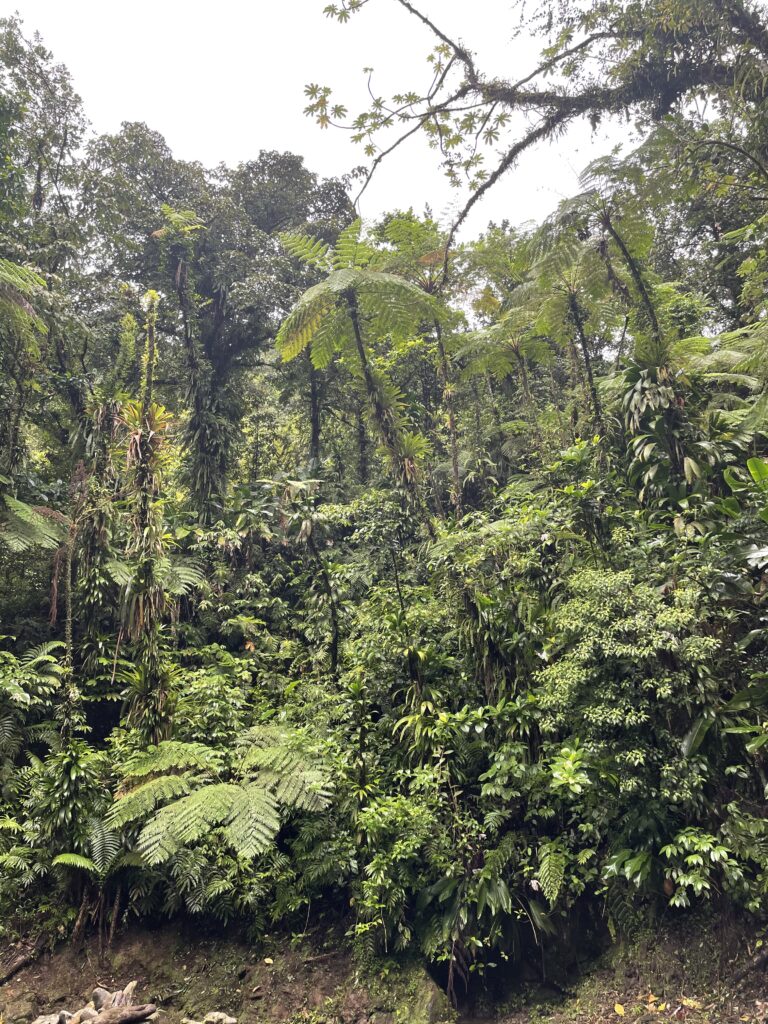
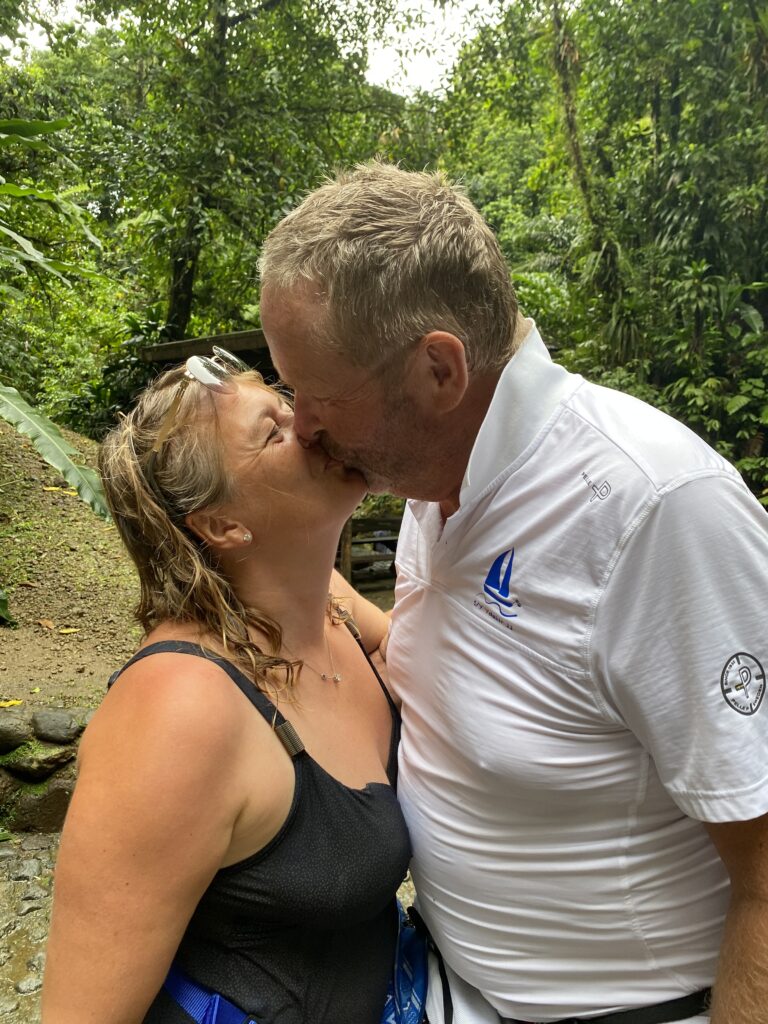
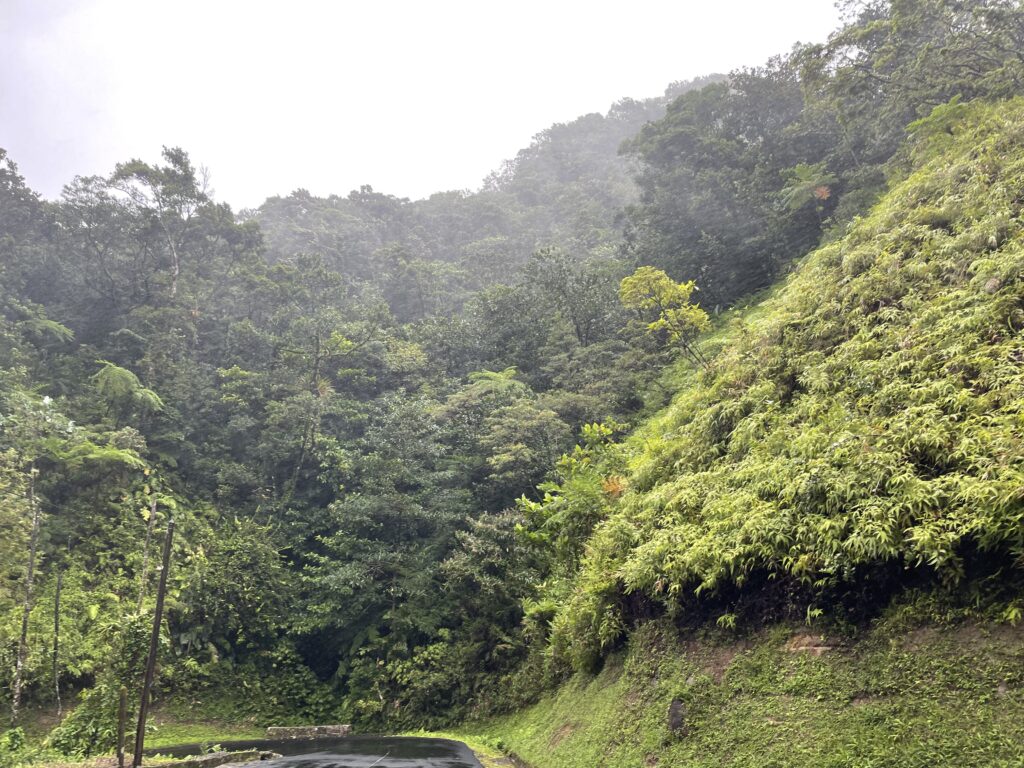

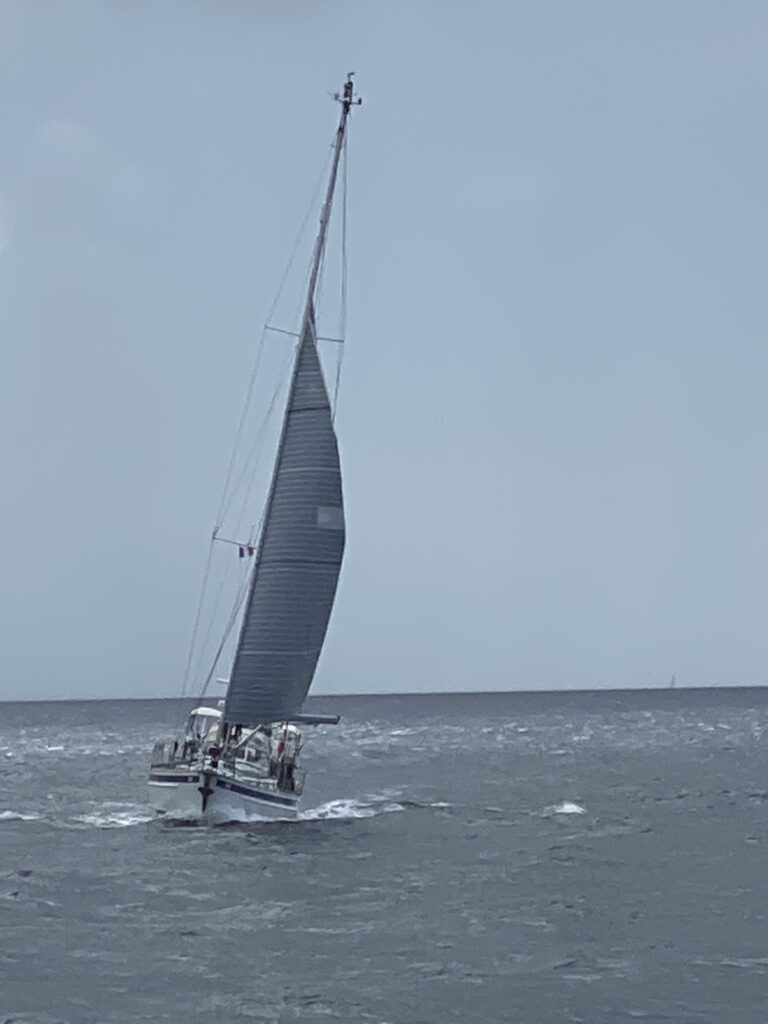
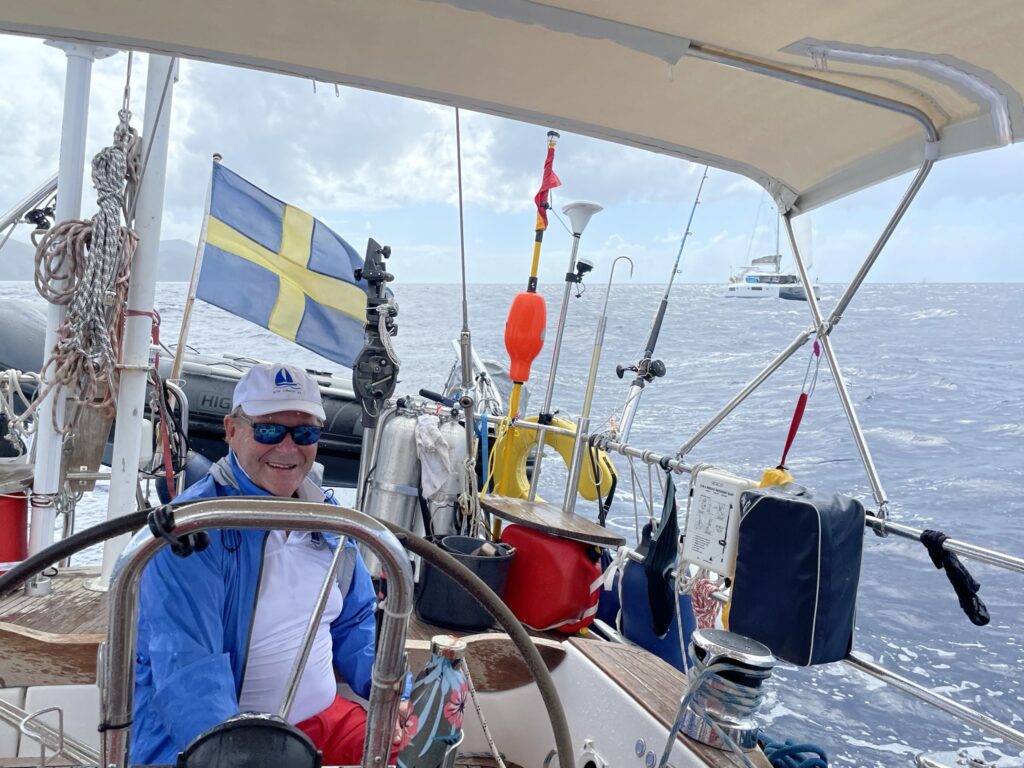
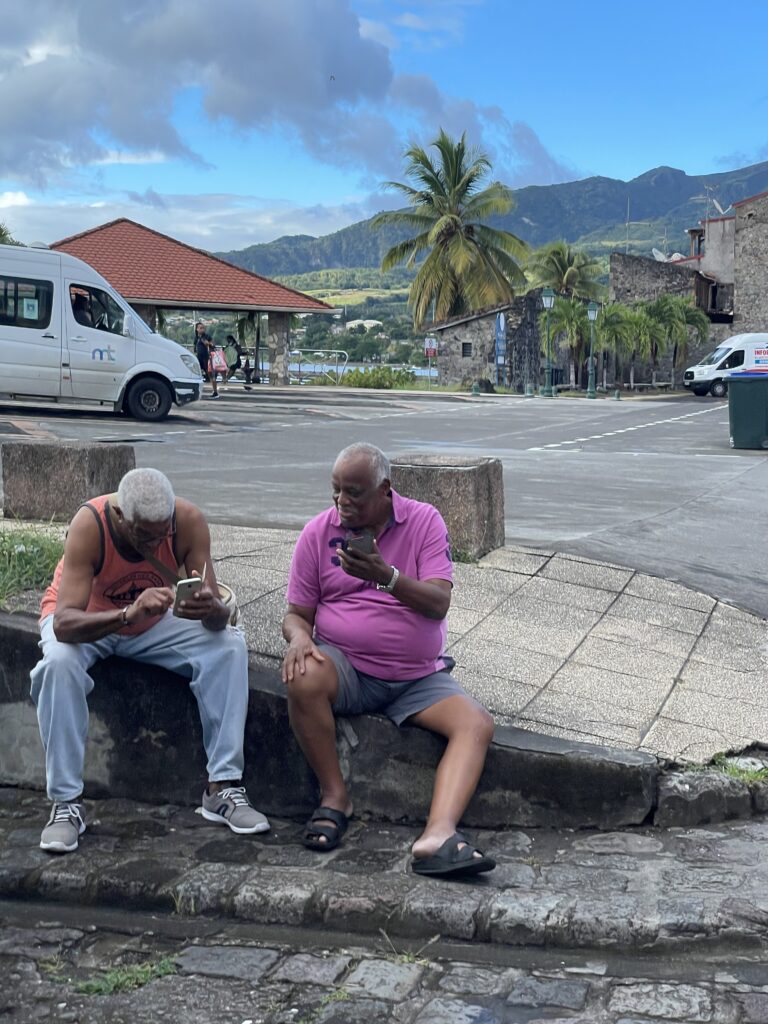
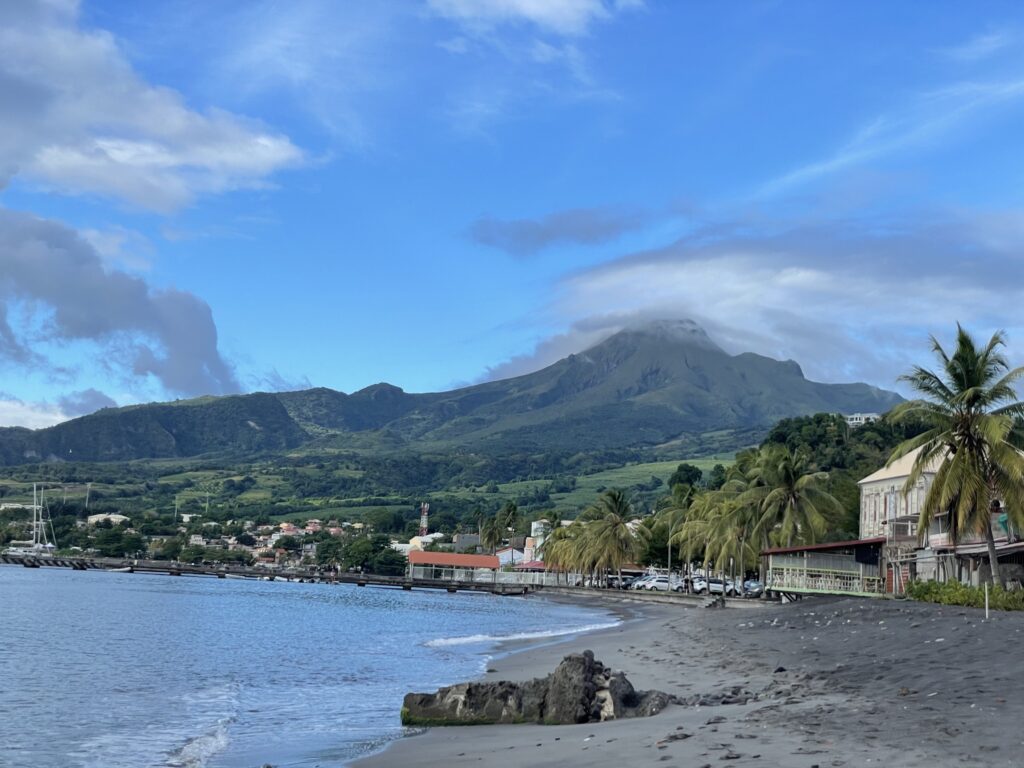
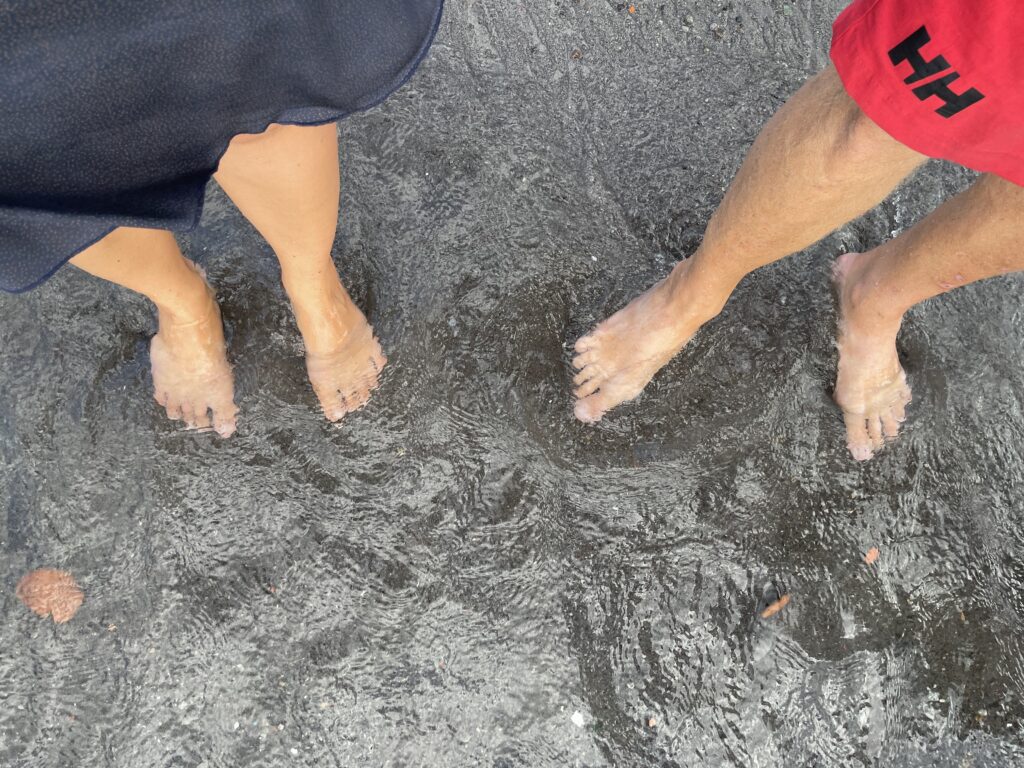
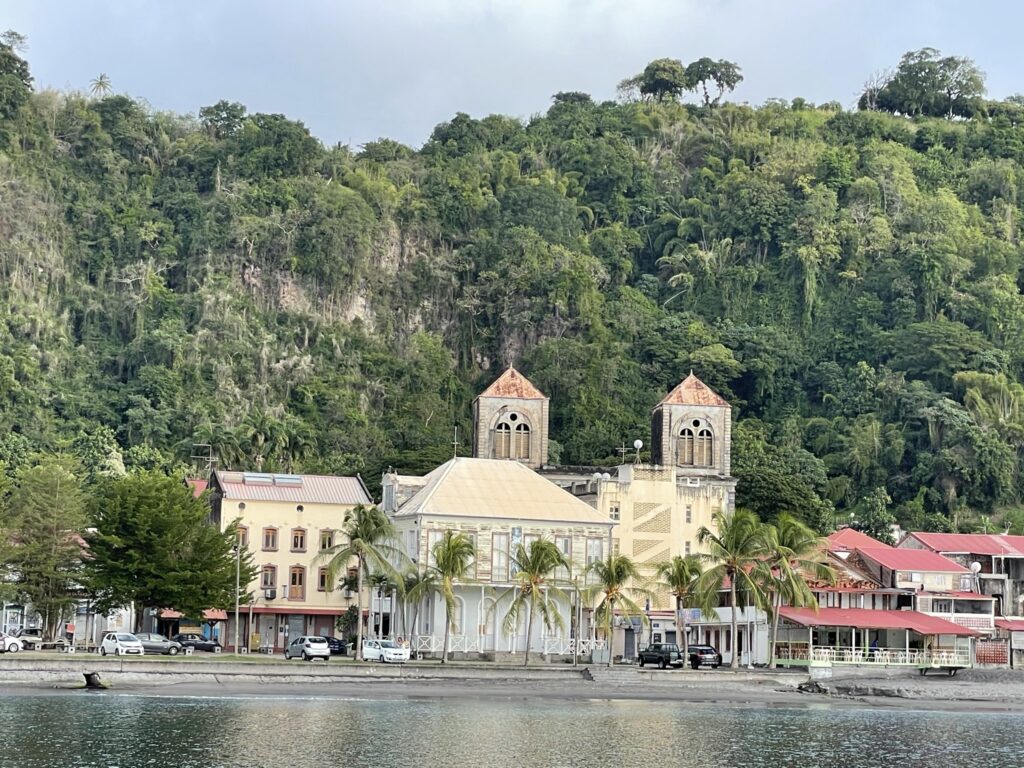
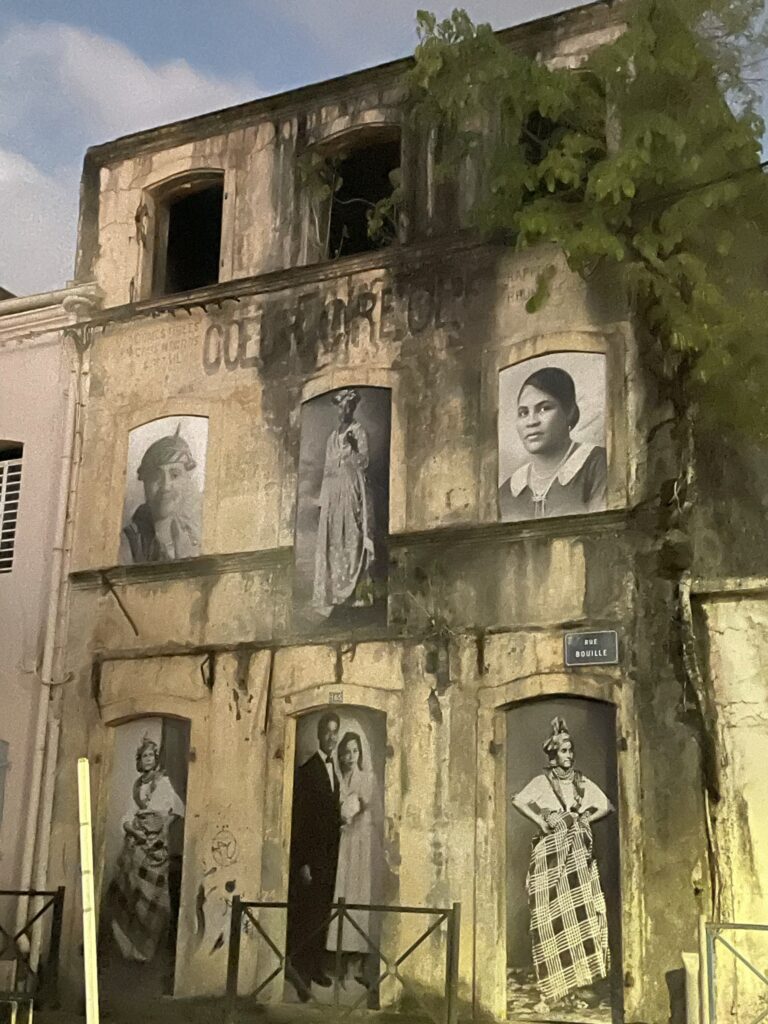
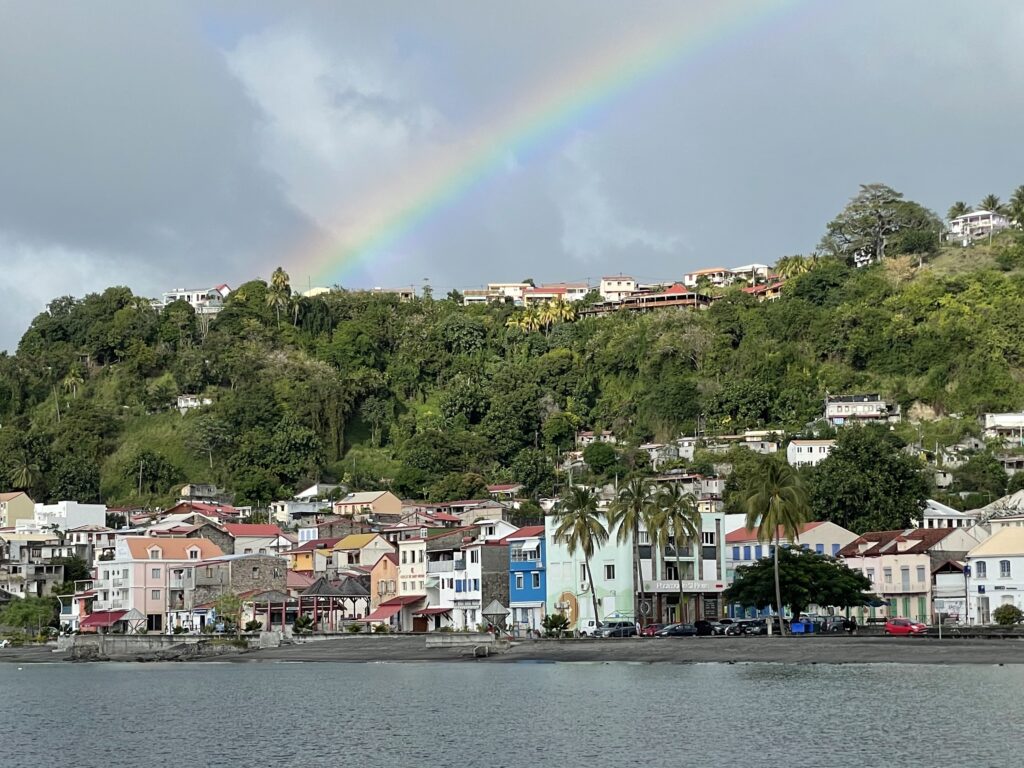
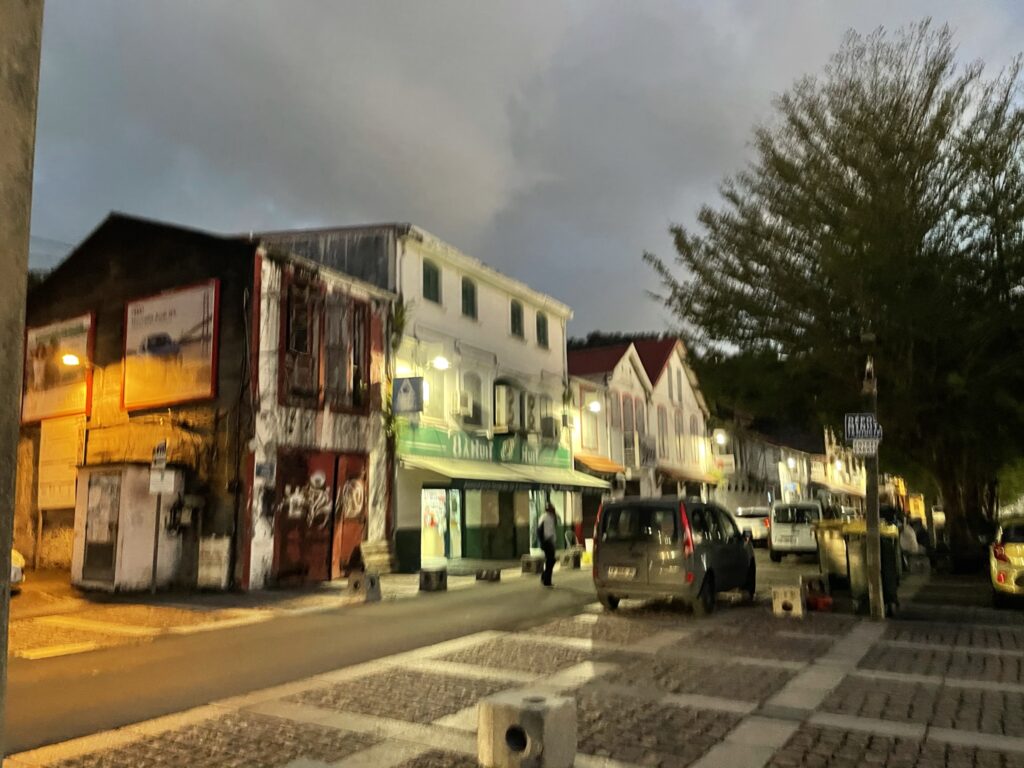
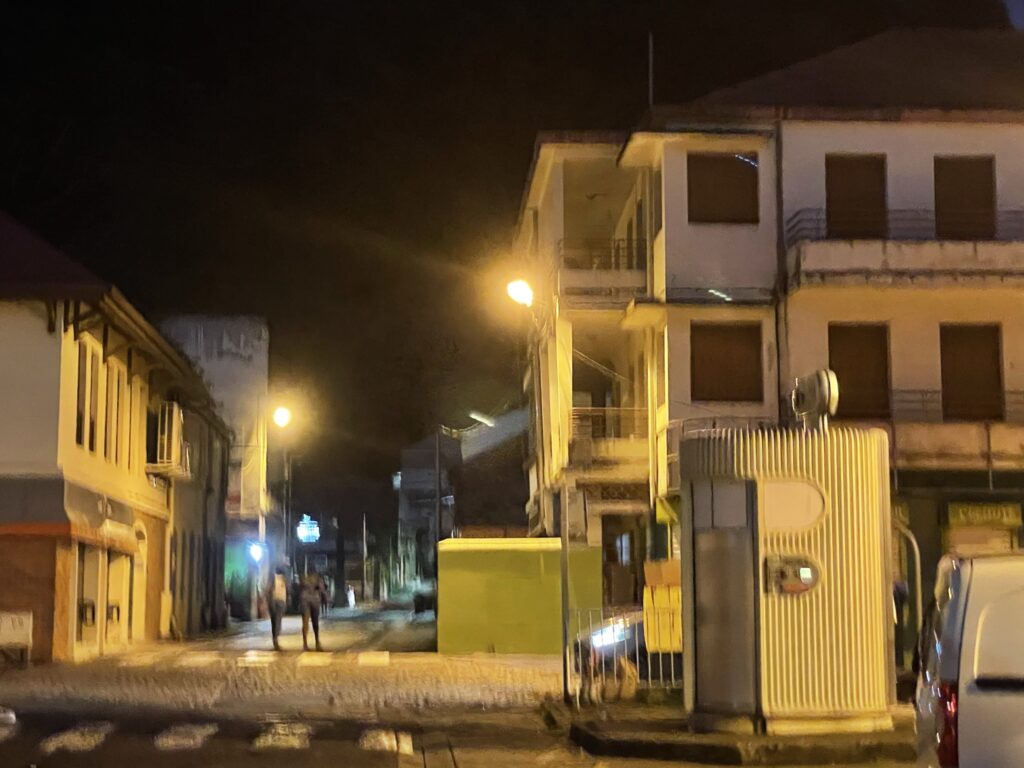

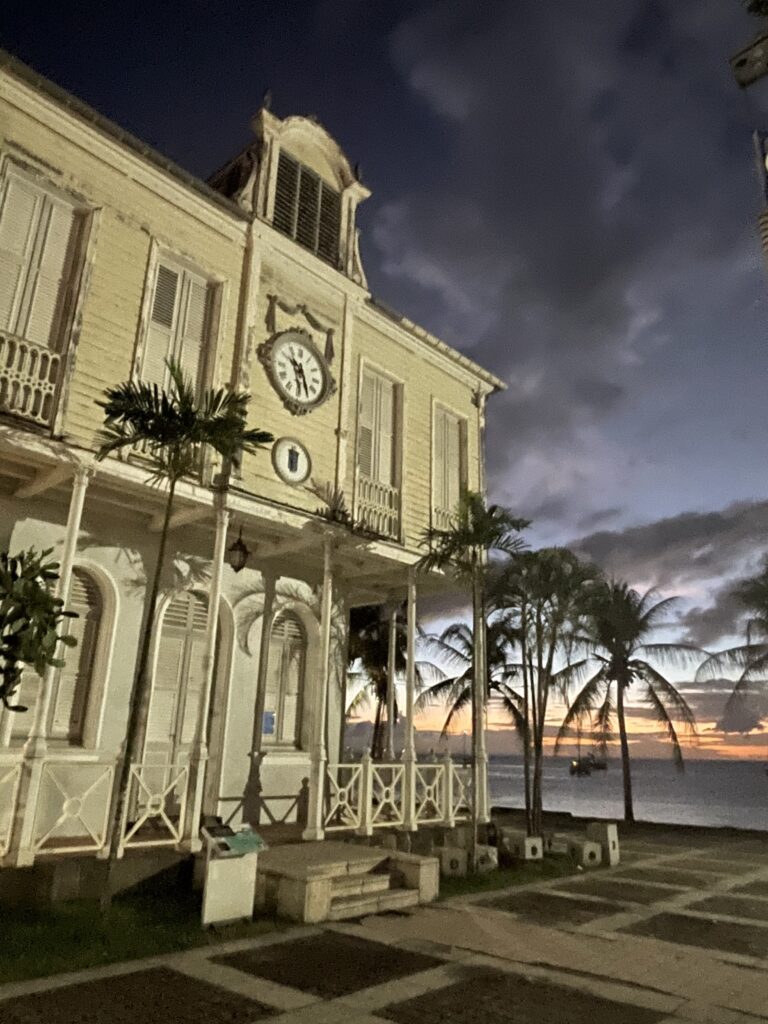
Congratulations to these gorgeous experiences and fantastic photos
In 2017 we stayed two weeks at Grand Anse de Arlet – very beautiful place!
Best wishes Anna & Per